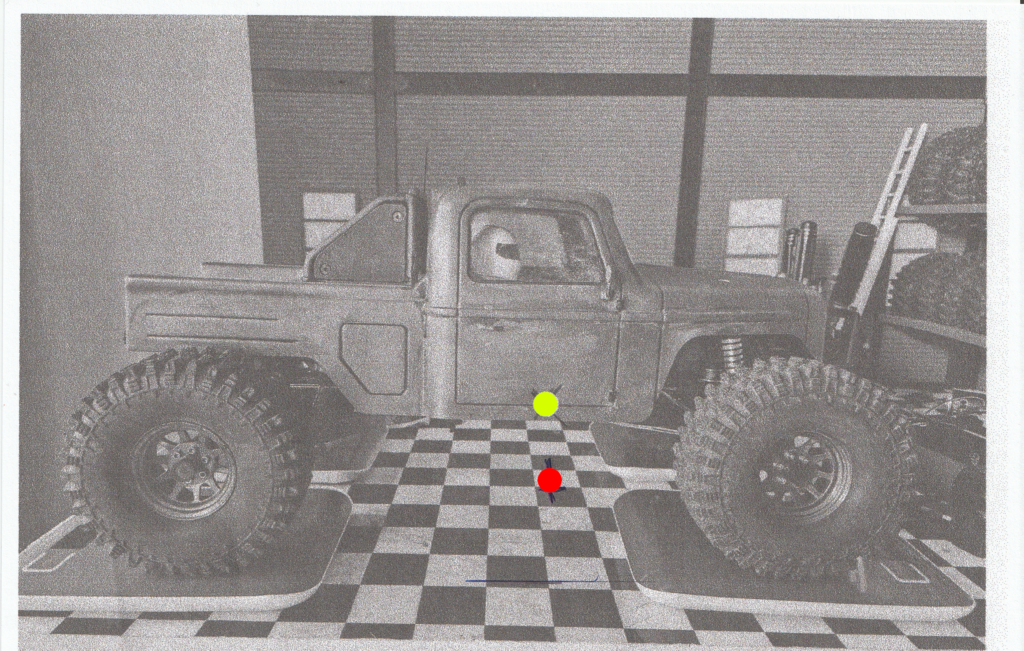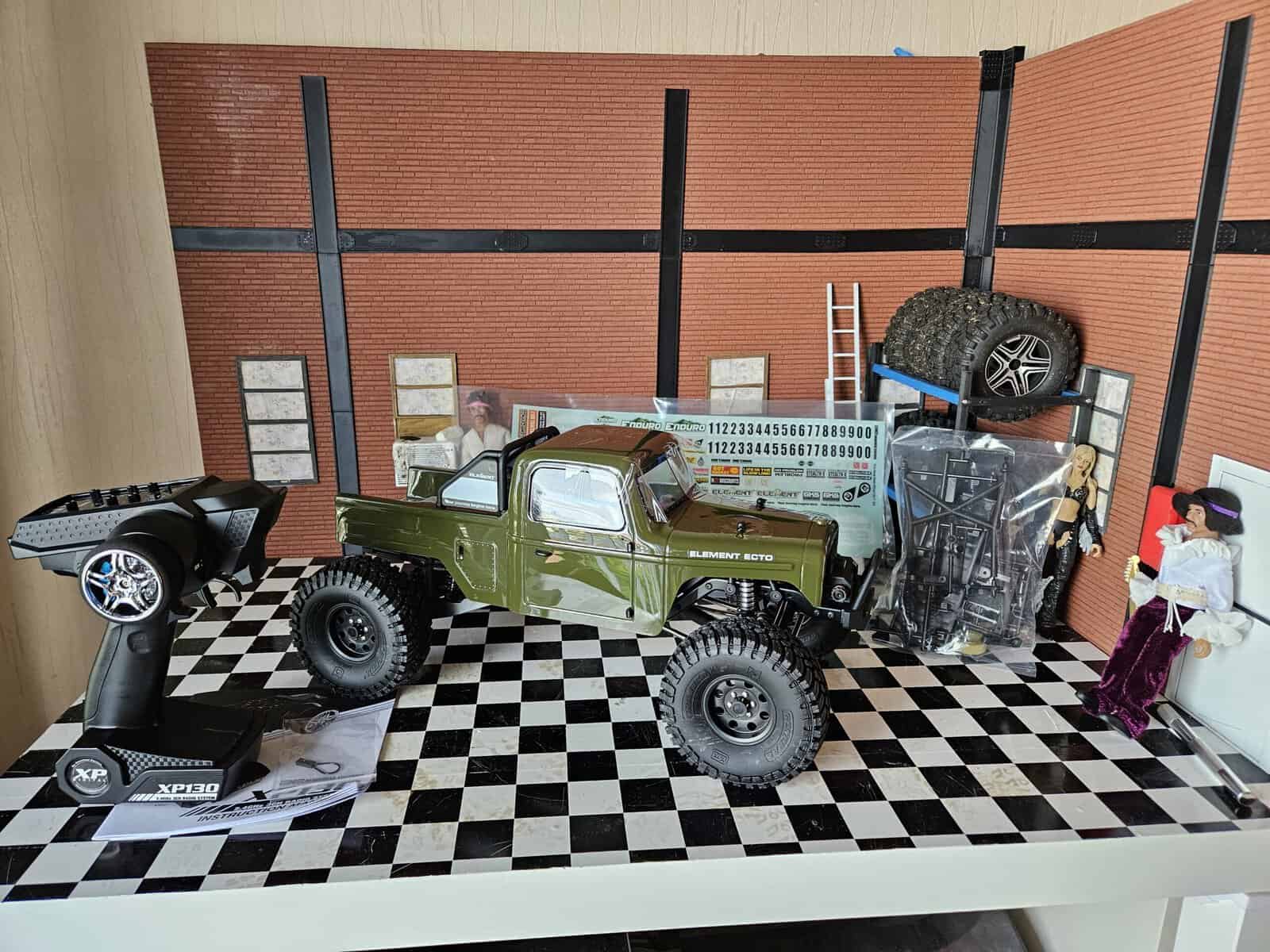I discovered the Element brand with the Utron. Its IFS suspension, for my use, orients it more towards a touring vehicle, even if it is, and by far, much more capable than a CC01 with comparable architecture. A Sendero would not have made much sense, it is a common architecture to many other crawlers, no sense in taking what I already have elsewhere, and the Knightrunner, Knightwalker and Bushido do not attract me more than that, on the other hand, the Ecto with its short rear trailing arms with anti-roll bar and its narrow body, that, that becomes interesting.
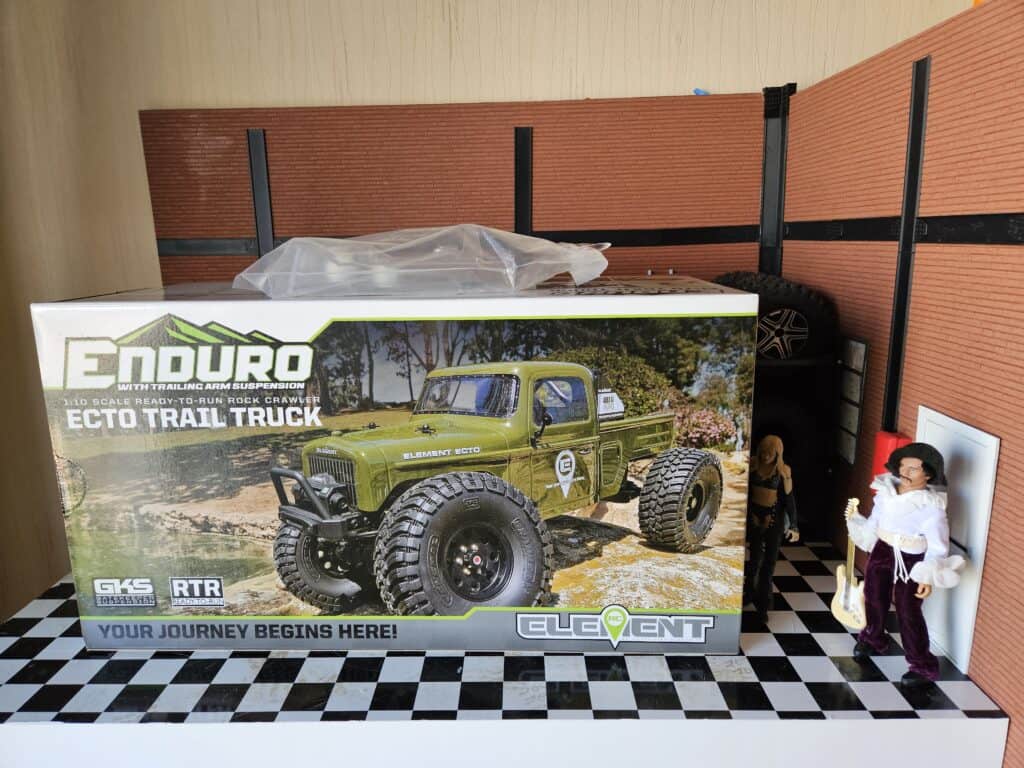
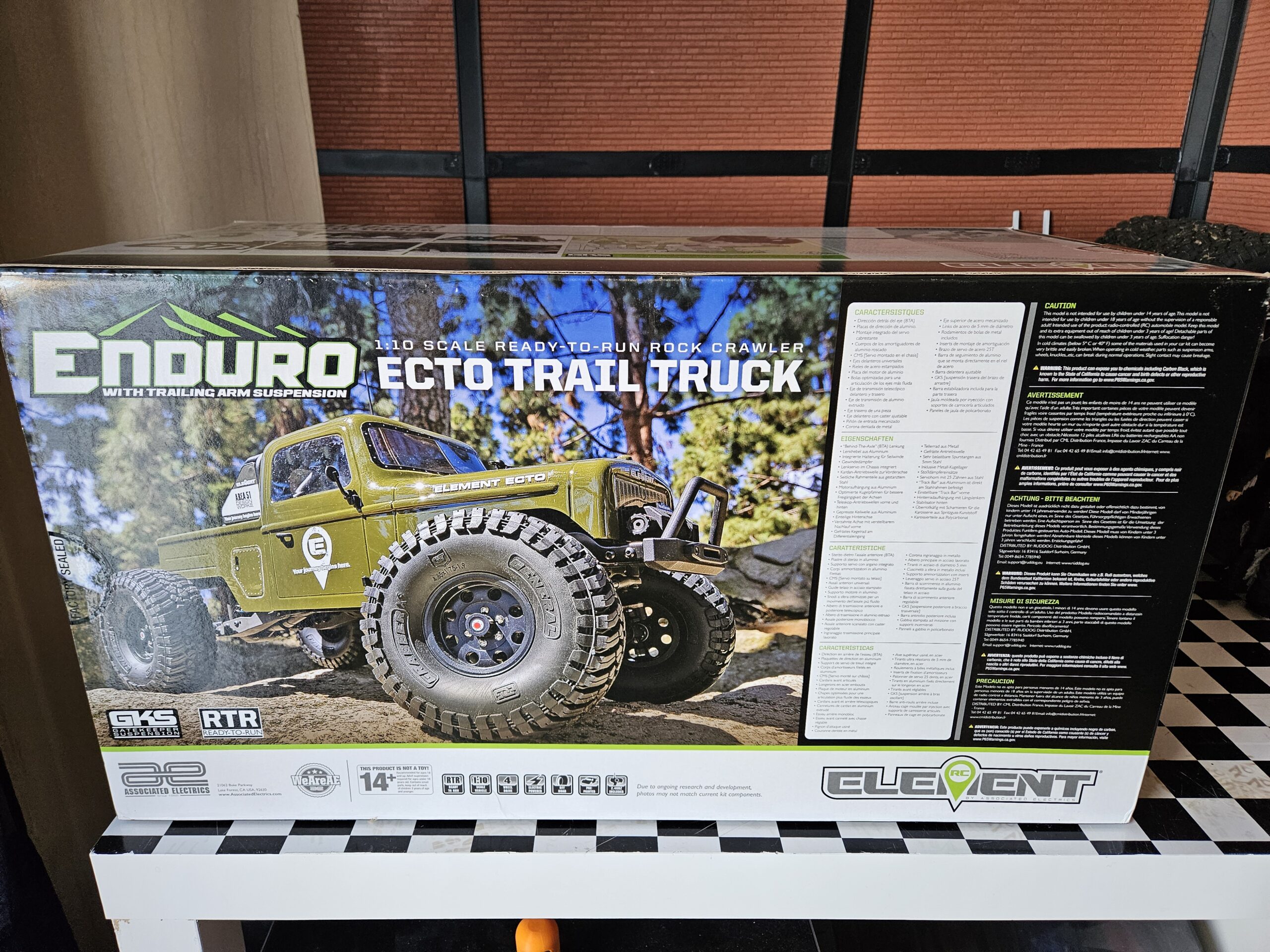
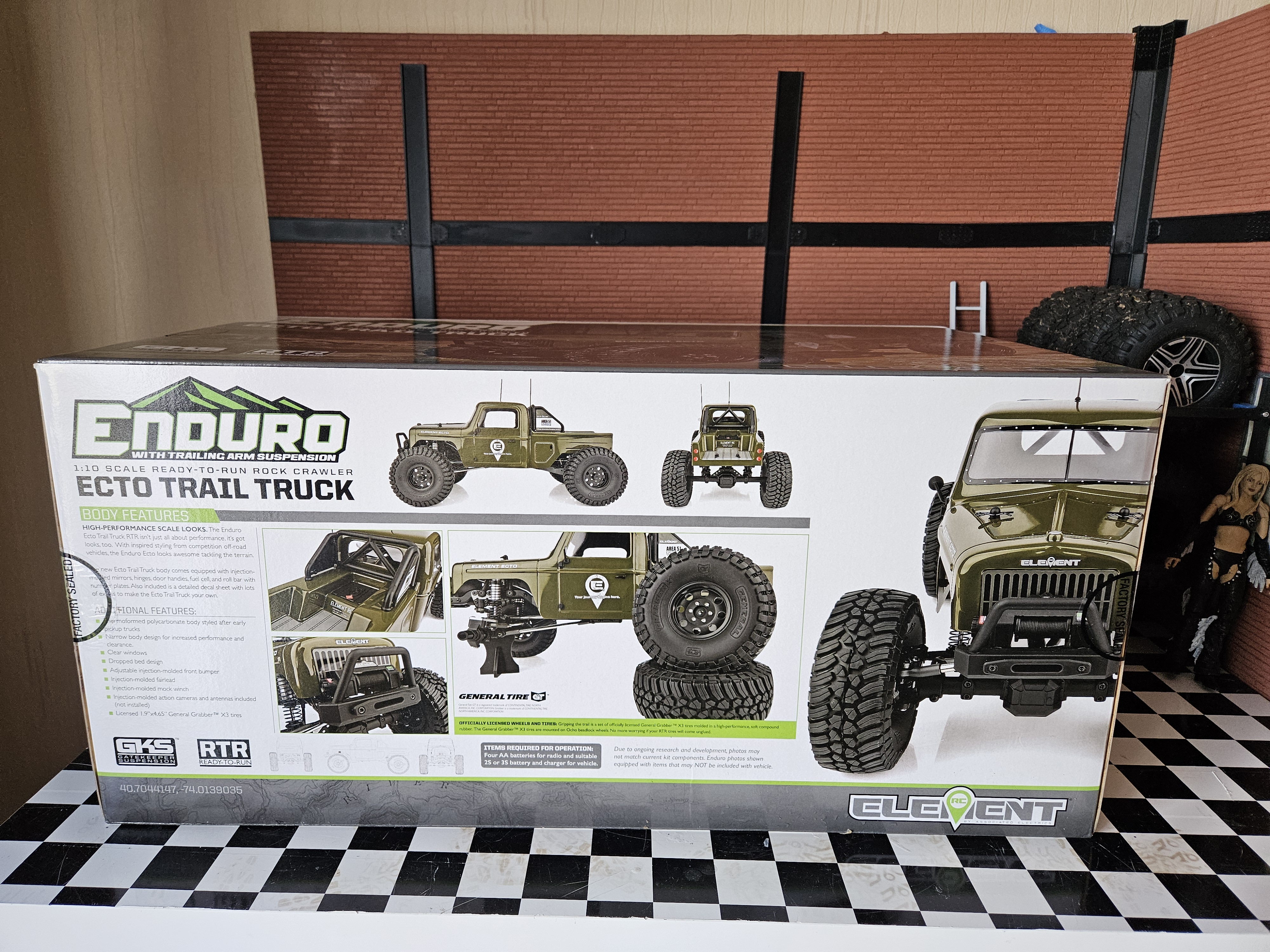
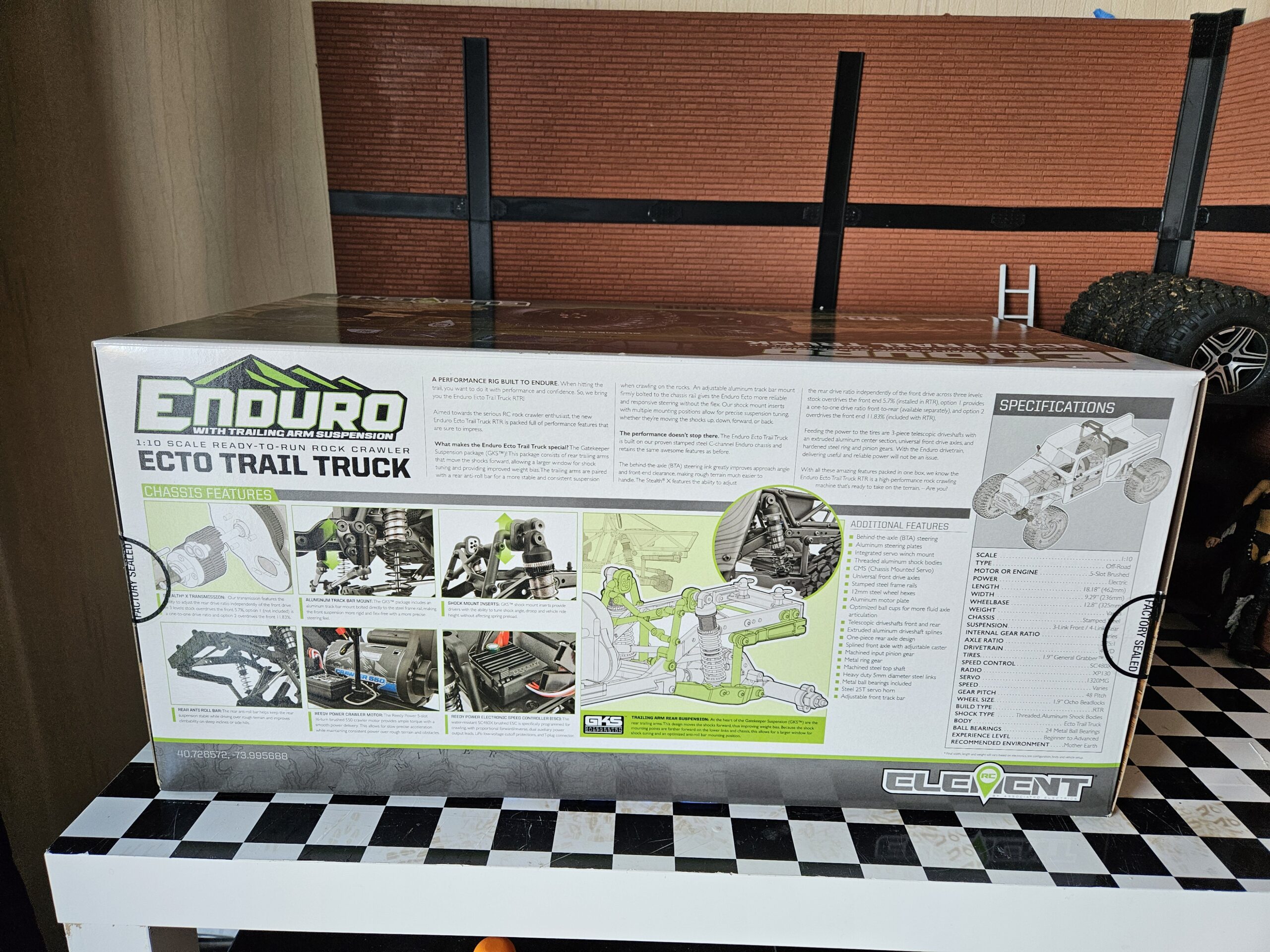
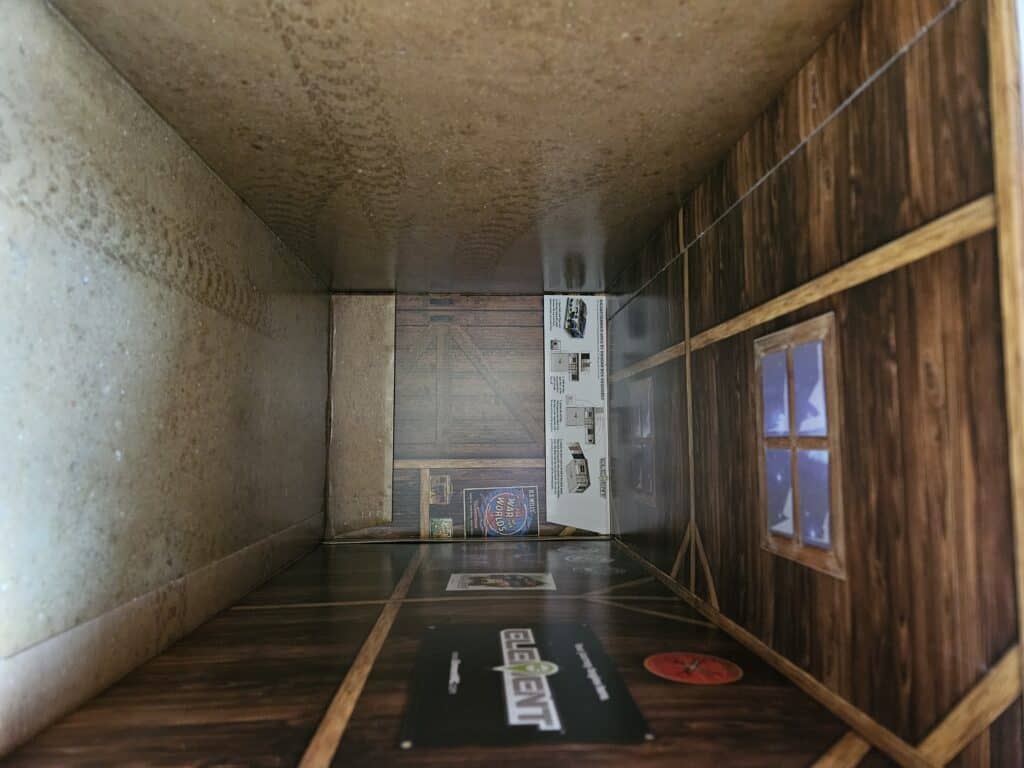
Classic box of Element products, with different photos in situation and presentation of the technical elements of the model. And of course, the inside of the box which allows to make a small garage diorama, specific to each model of the brand.
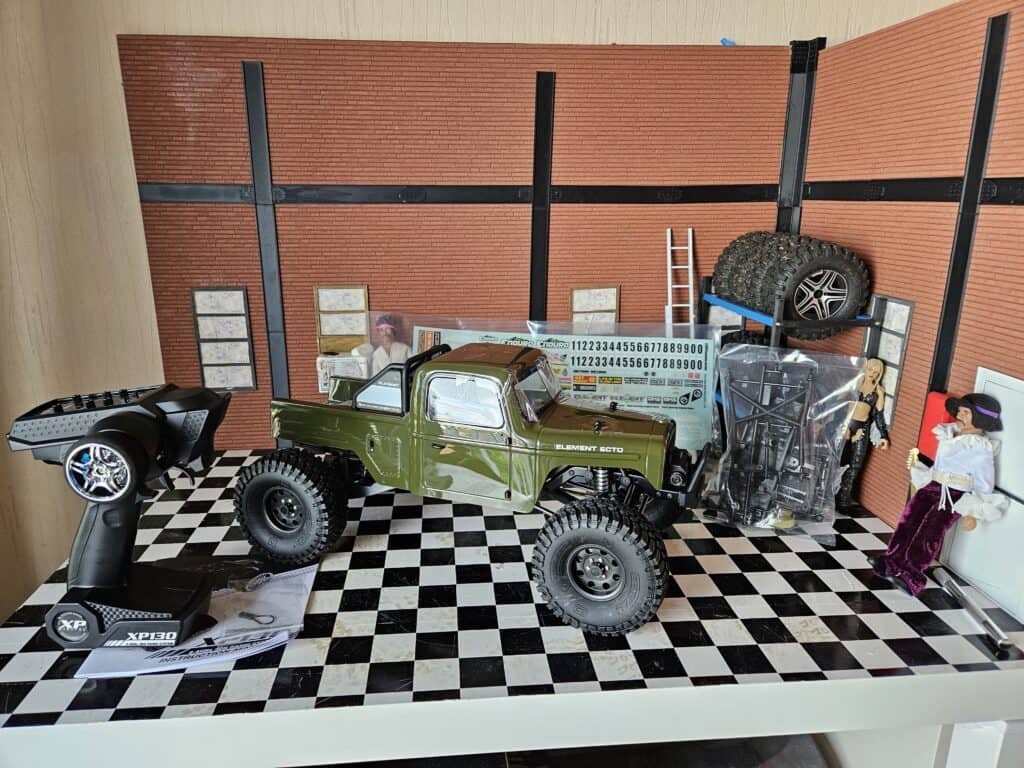
The contents of the box … the least inspiring RTR radio, the Ecto of course, an “accessories” pouch and a “paperwork” pouch.
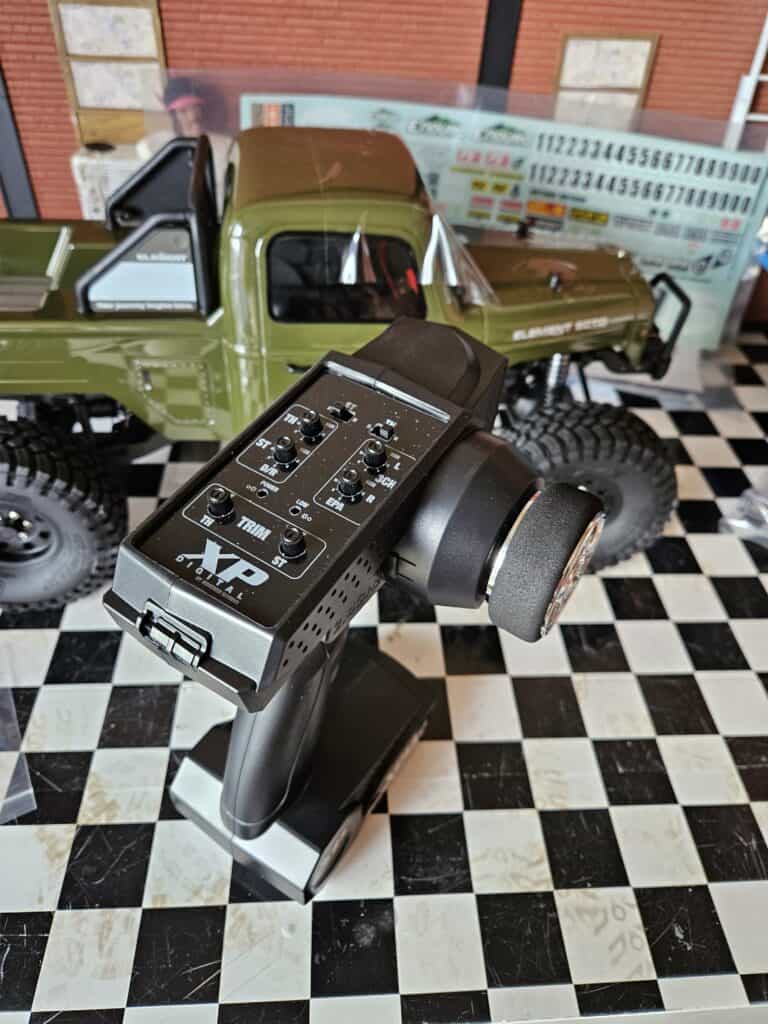
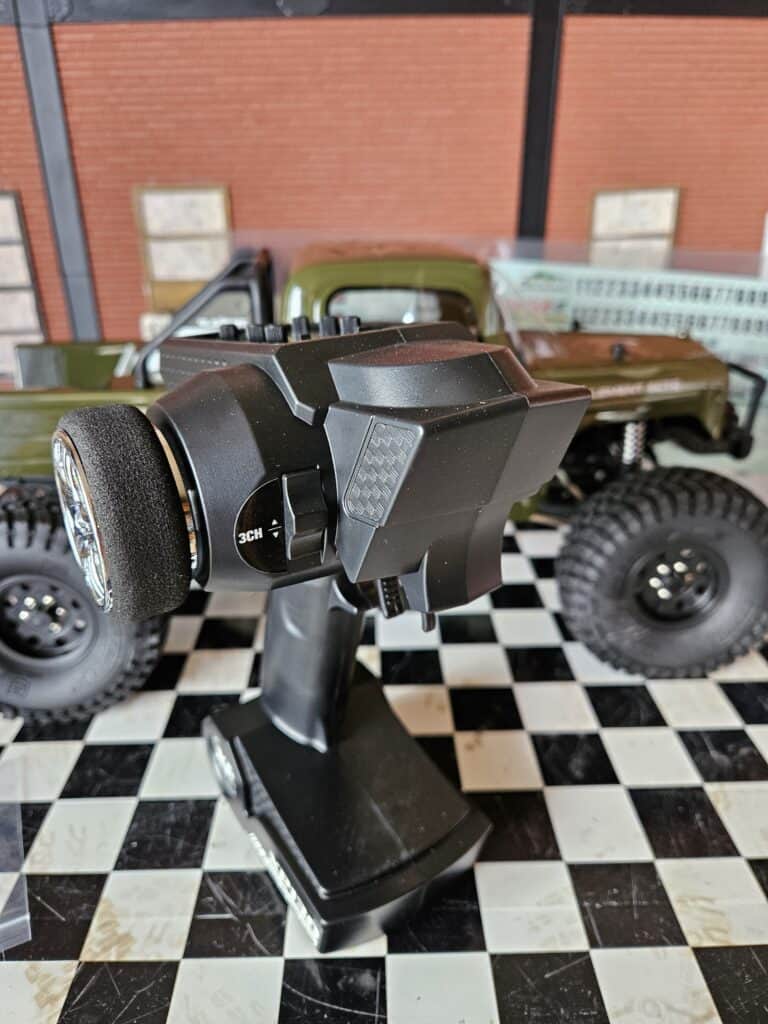
It comes from a good intention and it’s always something gained when you dip into your parts catalog, but despite the presence of a 3rd on-off-on channel very appropriate for a winch, and sufficient basic settings, the radio does not inspire good feelings … the steering wheel is located too far for thumb steering, and the 4 AA batteries will not compensate for its light weight. To be seen in use but I do not plan to keep the original electronics for this model.
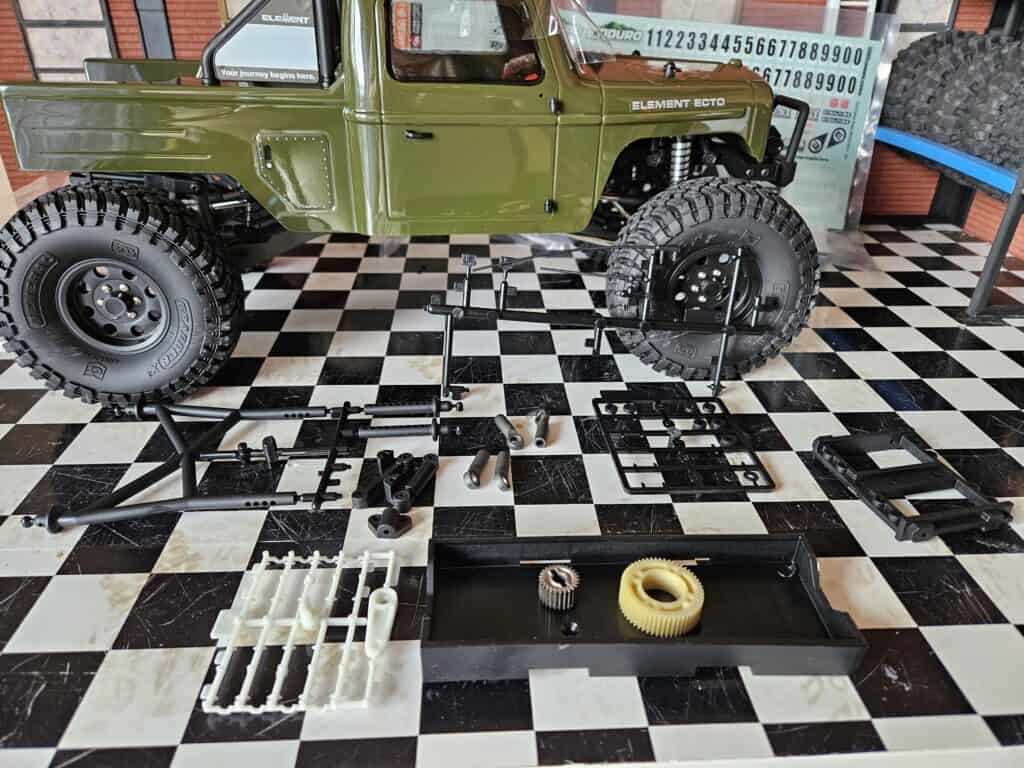
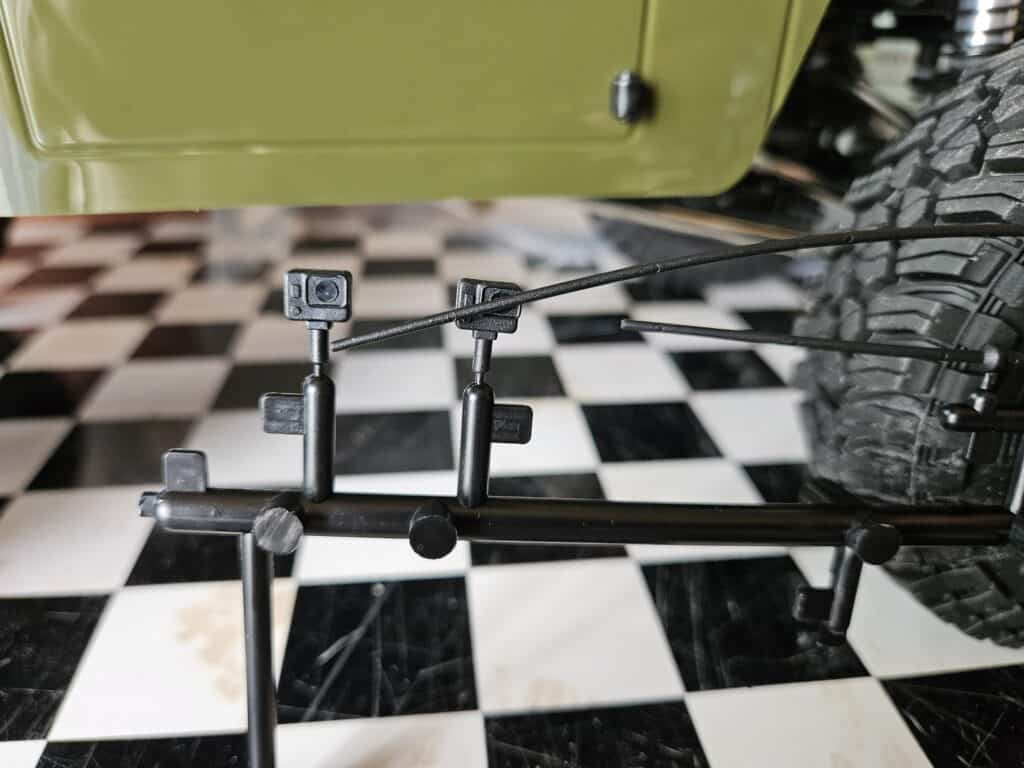
The “accessories” pouch is well supplied. Body supports for those who would like to install a more “scale” one, the ball joint cluster used during the assembly of the RTR, a spare a plastic servo horn advantageously replaced originally by a metal one, unused rod-ends, but without their ball joints … they can nevertheless be used for those who would like to switch to SOA … a large tray for classic batteries, a pair of pinions to switch to an overdrive of 11.83% instead of the default 5%, a cluster of spacers, and finally a plastic cluster including 2 antennas and a pair of GoPro.
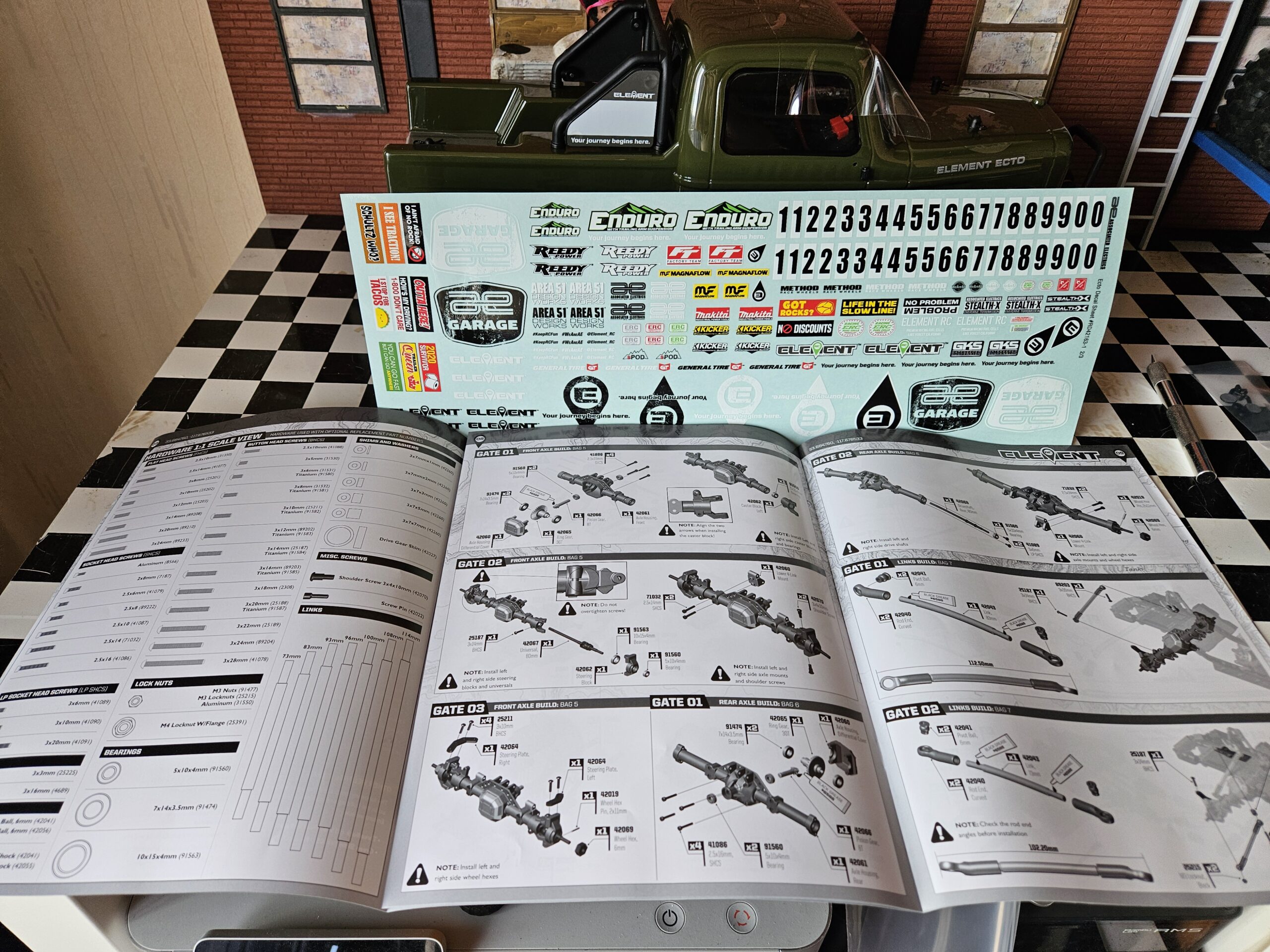
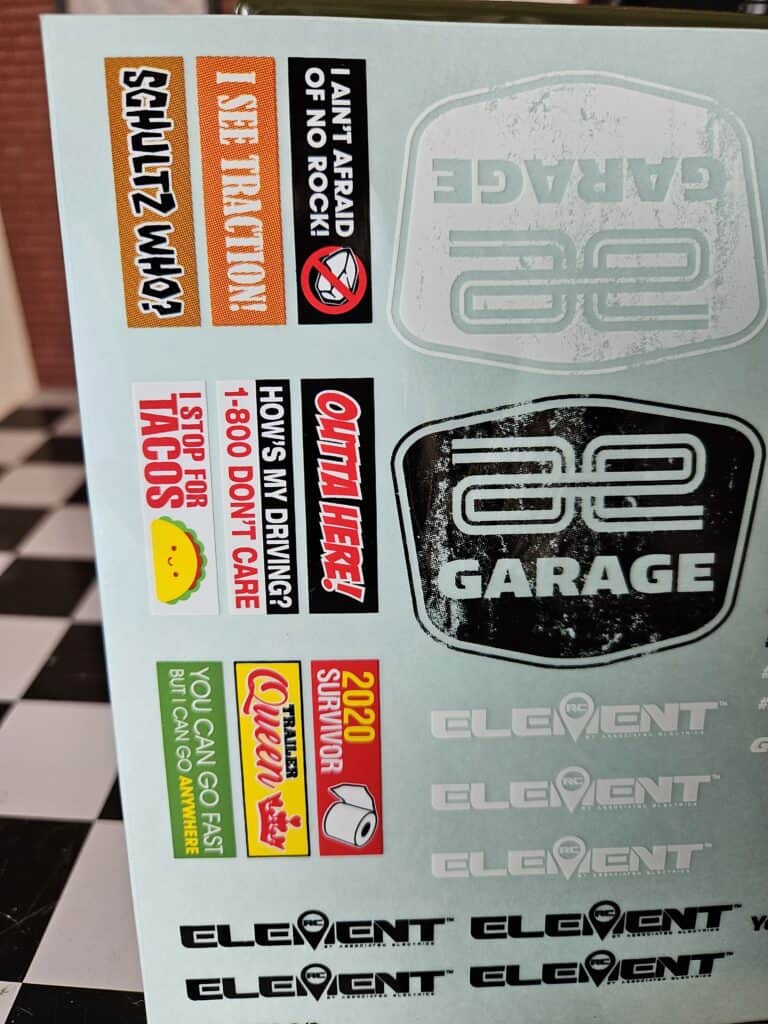
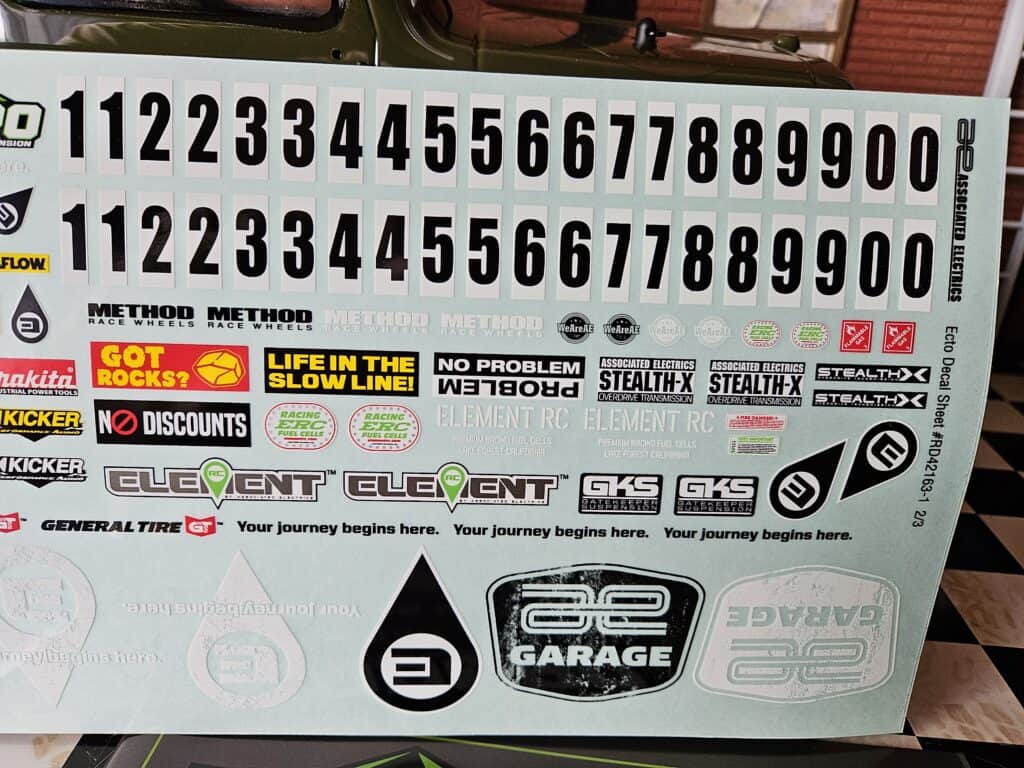
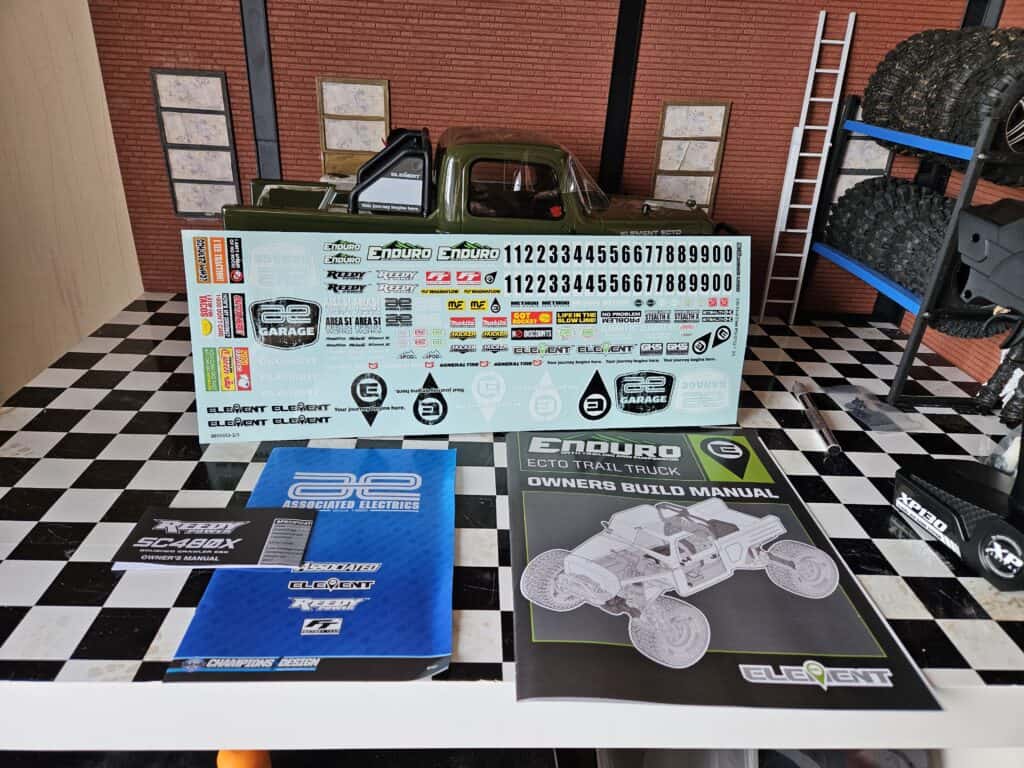
The “paperwork” pouch includes a small advertising pamphlet, the ESC manual, a user and assembly guide with a look reminiscent of 1:1 automobile manuals and very well designed, and a very comprehensive sheet of stickers whose lack of pre-cutting can only be regretted… and the difficulty of choosing which bumper sticker to install 😀
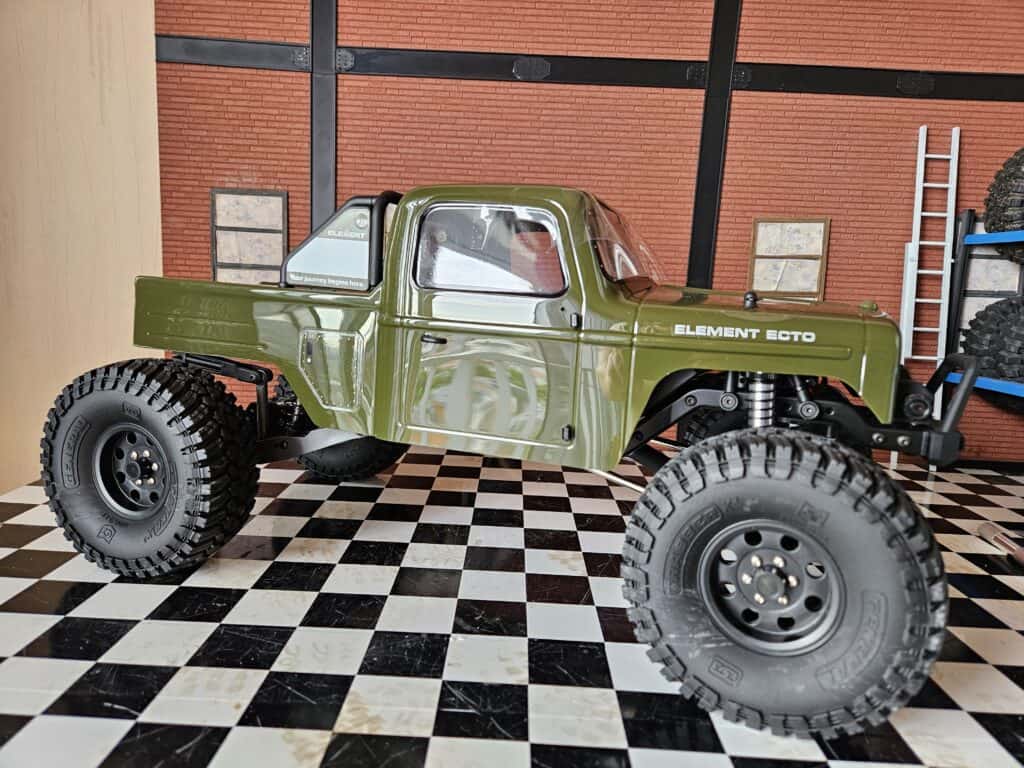
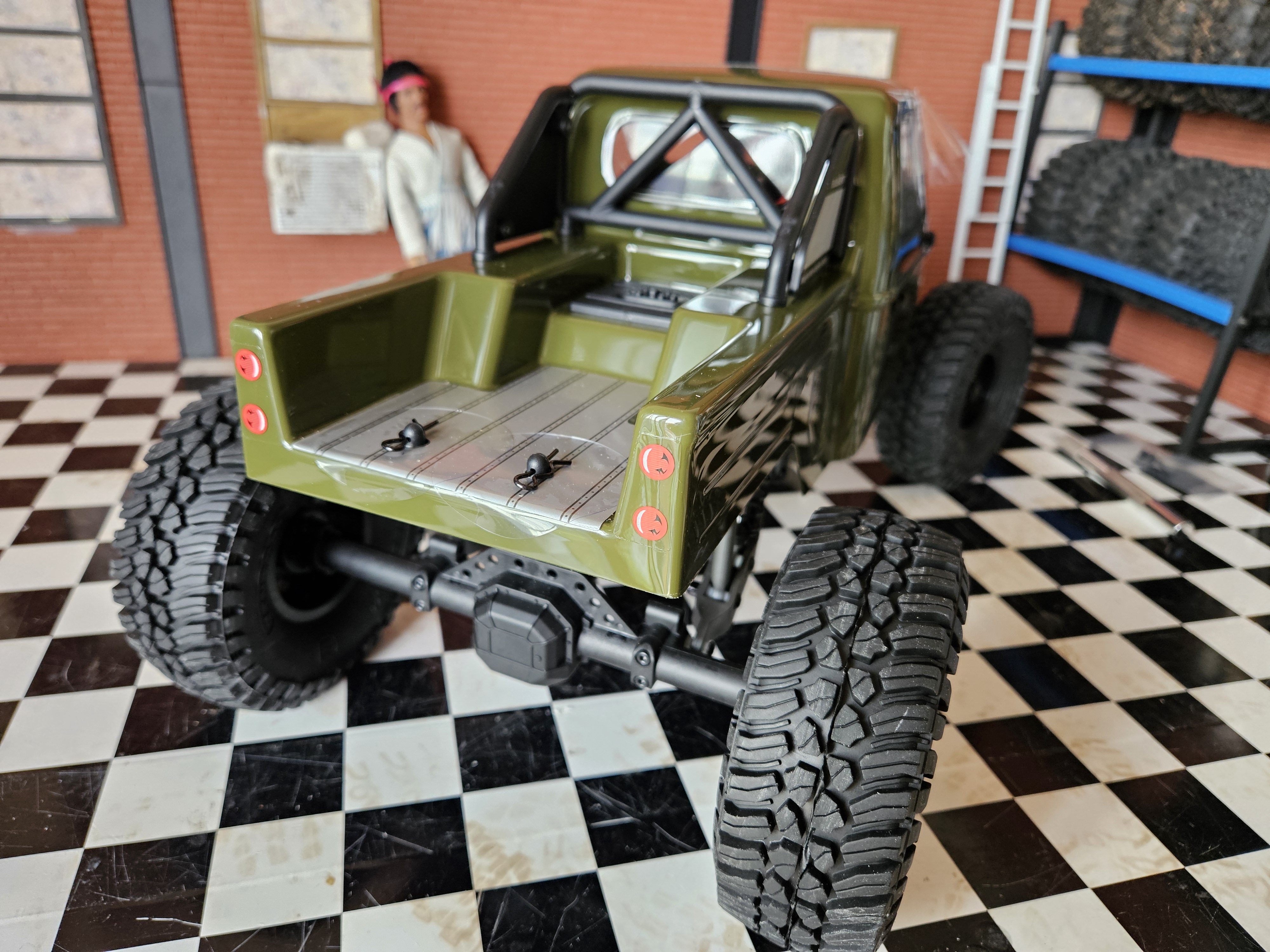
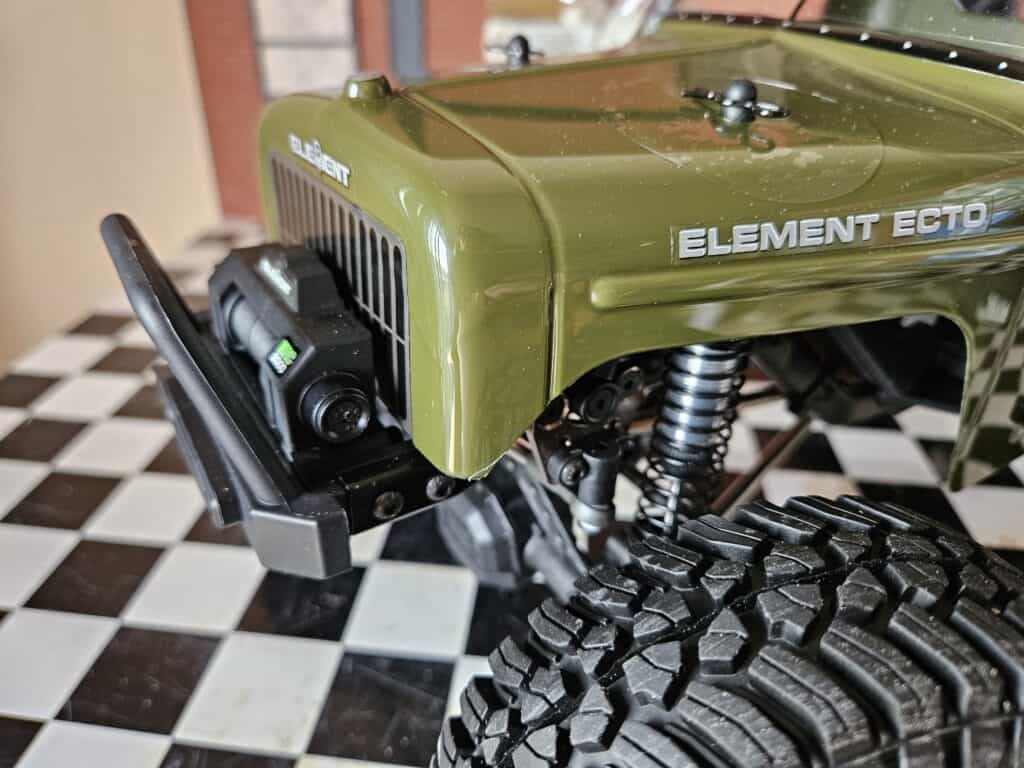
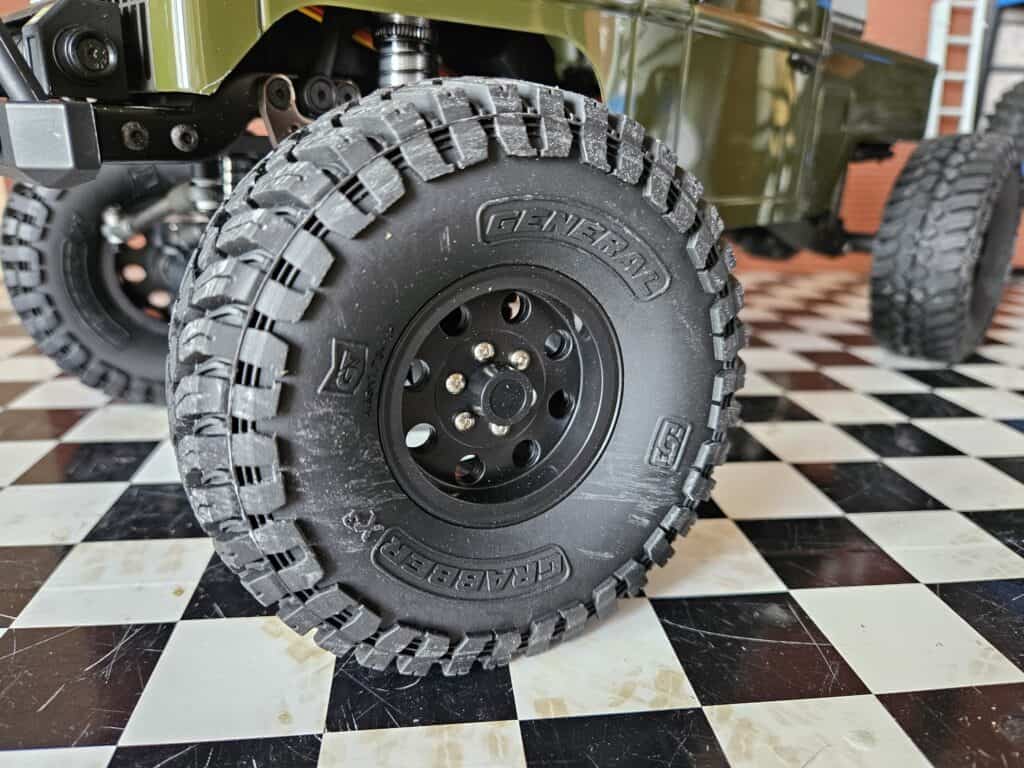
One of the Ecto’s special features is its body. Inspired by the very fashionable Dodge Power Wagon, but in a “sport” version, a narrow bodywork, protruding very little from the side, and without fenders to constrain the suspension travel.
The tires are realistic, which will not necessarily make them efficient on all terrains, but they do not lack a minimum of flexibility. They are mounted on beadlock rims for which we can regret that Element did not opt for more realistic screws, just to go all the way.
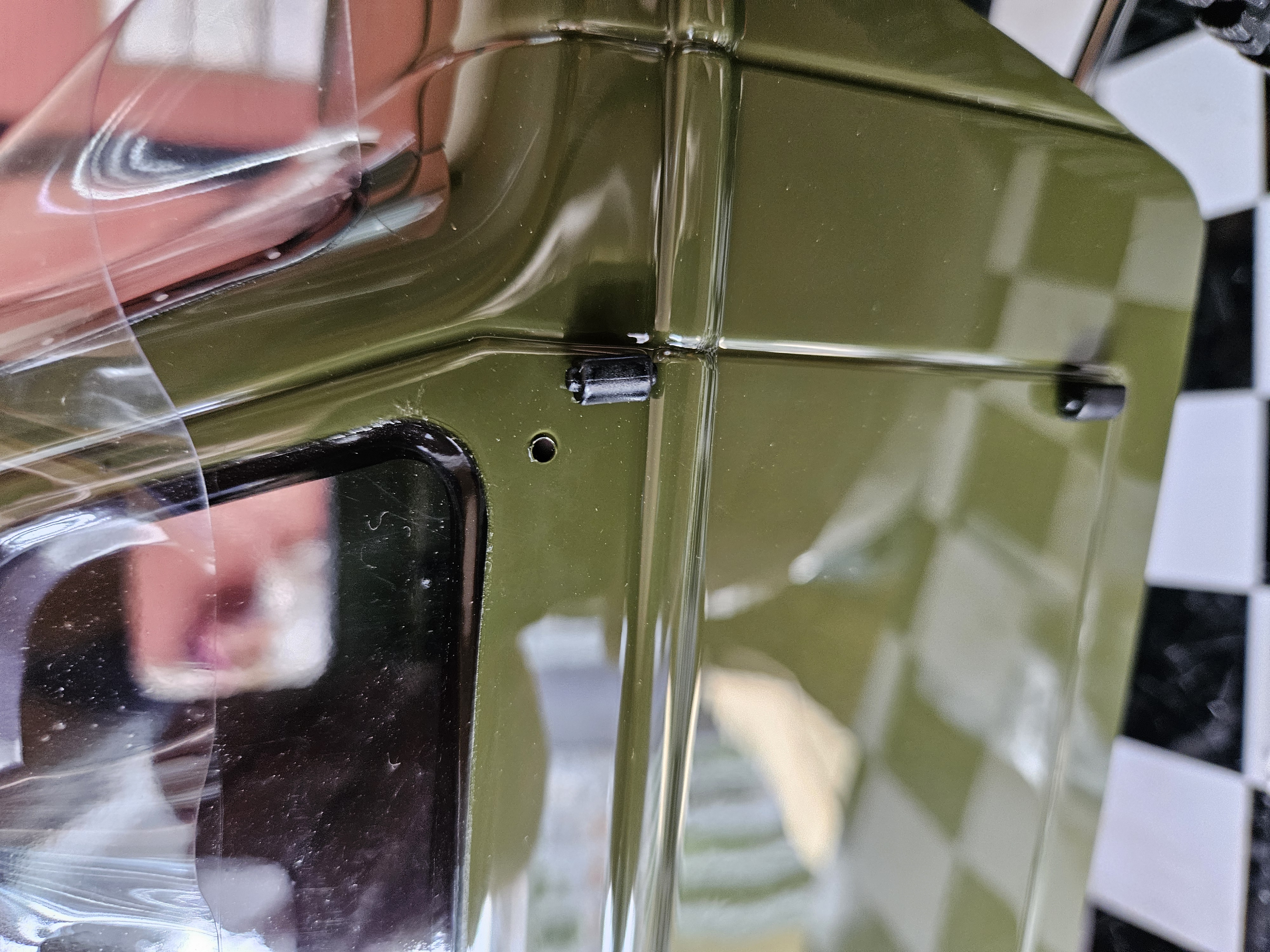
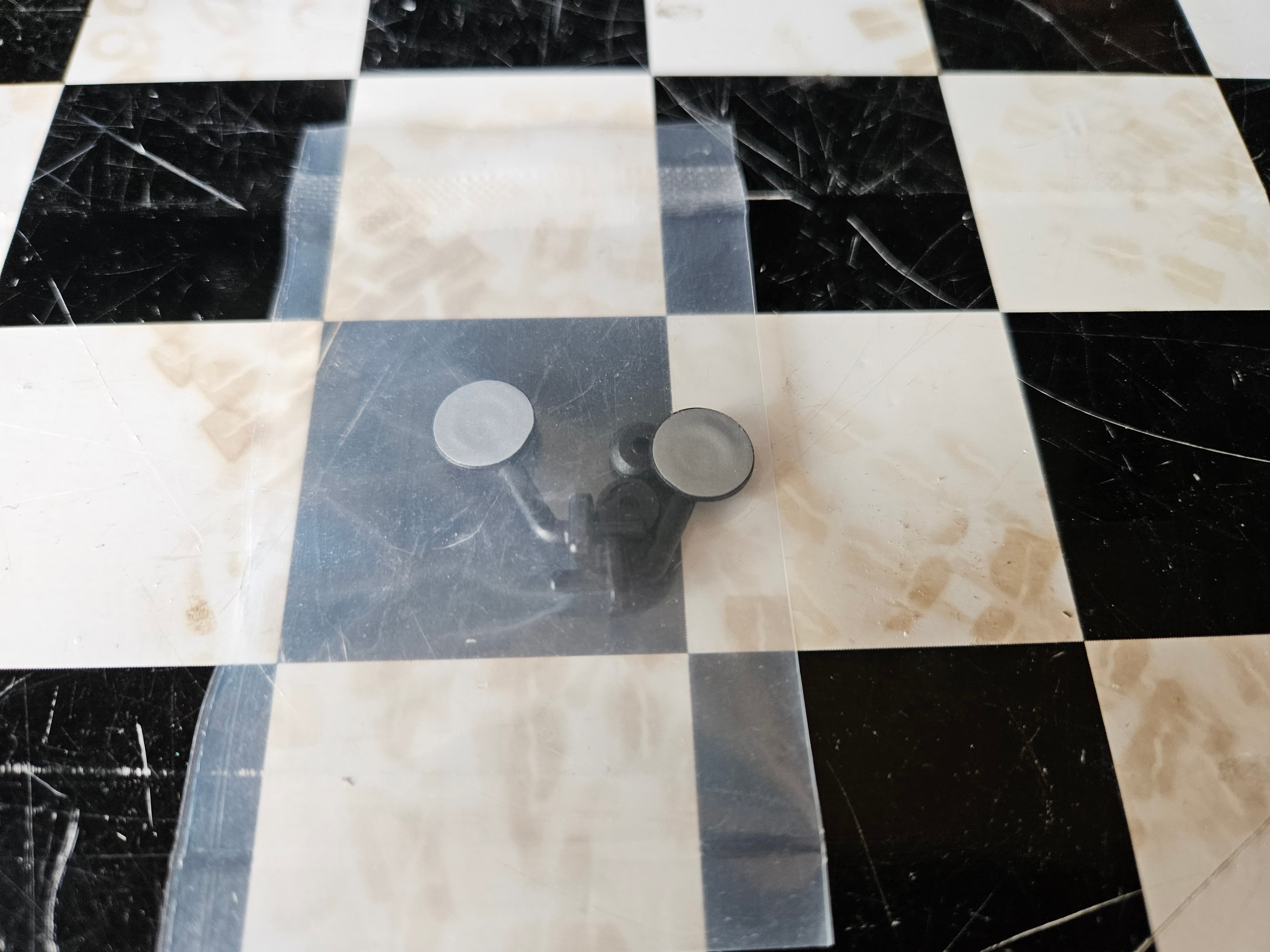
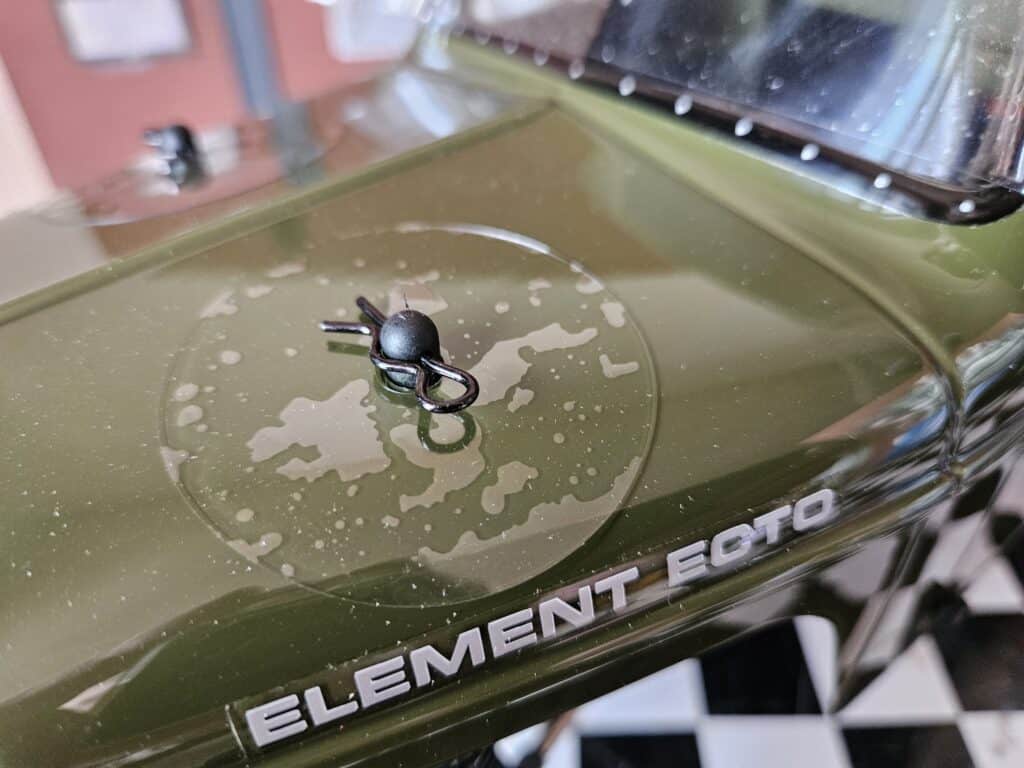

Strangely, the rearview mirrors, whose locations are pre-drilled on the body, have not been installed … an oversight in the process on the chain or optimization of handling? In any case, it is not the risks related to transport, not being very exposed thanks to the narrow body.
Alas, the body is held by the eternal and unsightly clips … so bad.
A sign of cost optimization, the reuse of the side members common to the rest of the range and the positioning of the body in relation to the wheels impose a front overhang slightly hidden by a false winch. But we are not in a dramatic overhang either, especially since the bumper is narrow and the wheels are large in diameter (4.65 “or 118 mm), it will be necessary to take into account as for many other crawlers often less well advantaged by “nature” … or call on the good care of Dr. Emel to improve that.
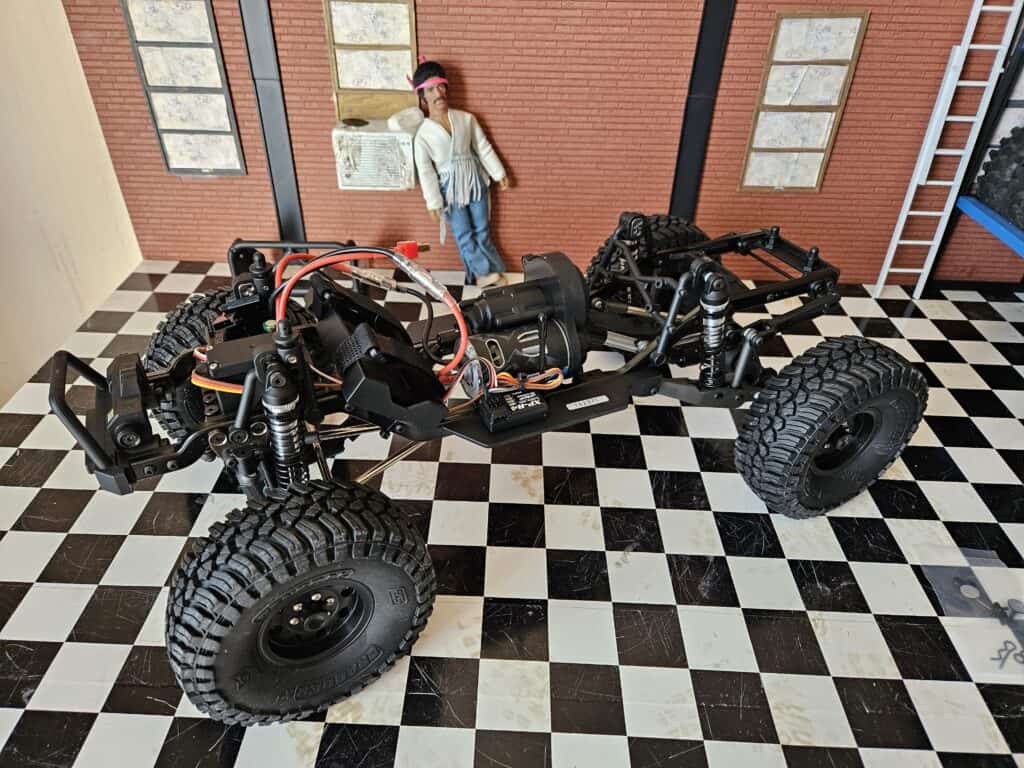
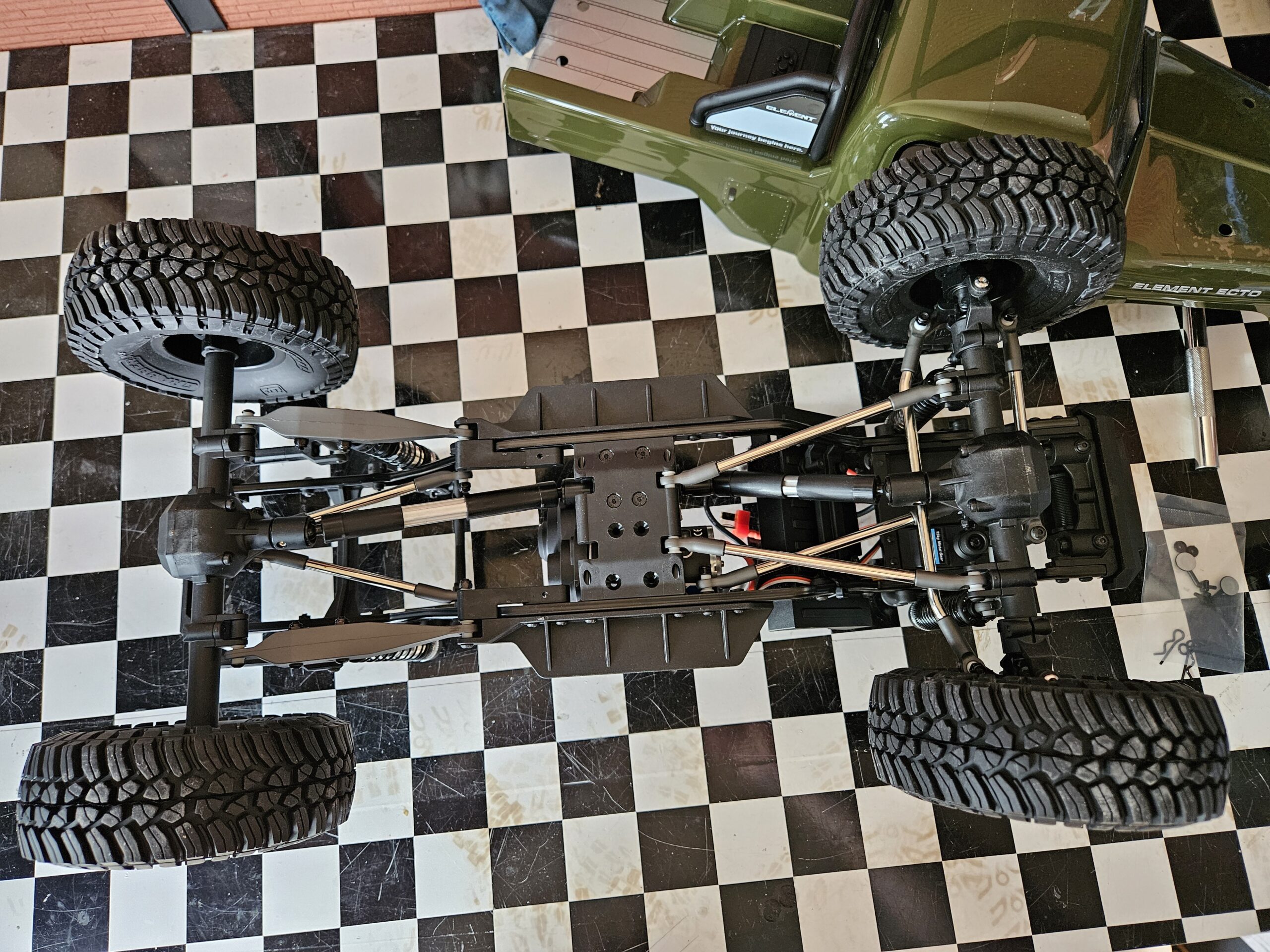
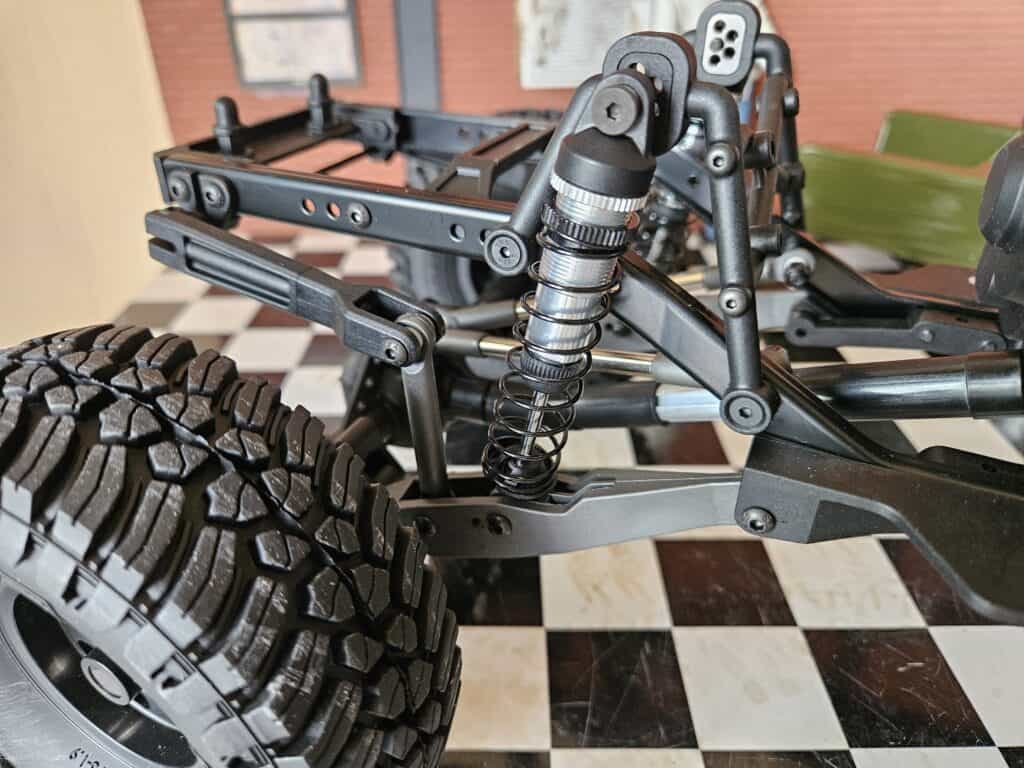
The chassis is out of the ordinary … we certainly find the classic “3 gears” transmission, even if it has 5, the servo on the chassis with the 3 links and the Panhard bar … but also a rare BTA assembly which moves the steering link behind the axle instead of being in front and getting in the way of obstacles, but also, and this is the particularity of this series, trailing arms at the rear, “Trophy Truck” style but very short, accompanied by an anti-roll bar, and combined with a long wheelbase of 324mm. This architecture was initiated on the Gatekeeper, a U4 which is unfortunately no longer in the catalog. As a result, we find ourselves with front links longer than the rear links … whereas usually, it is rather the opposite.
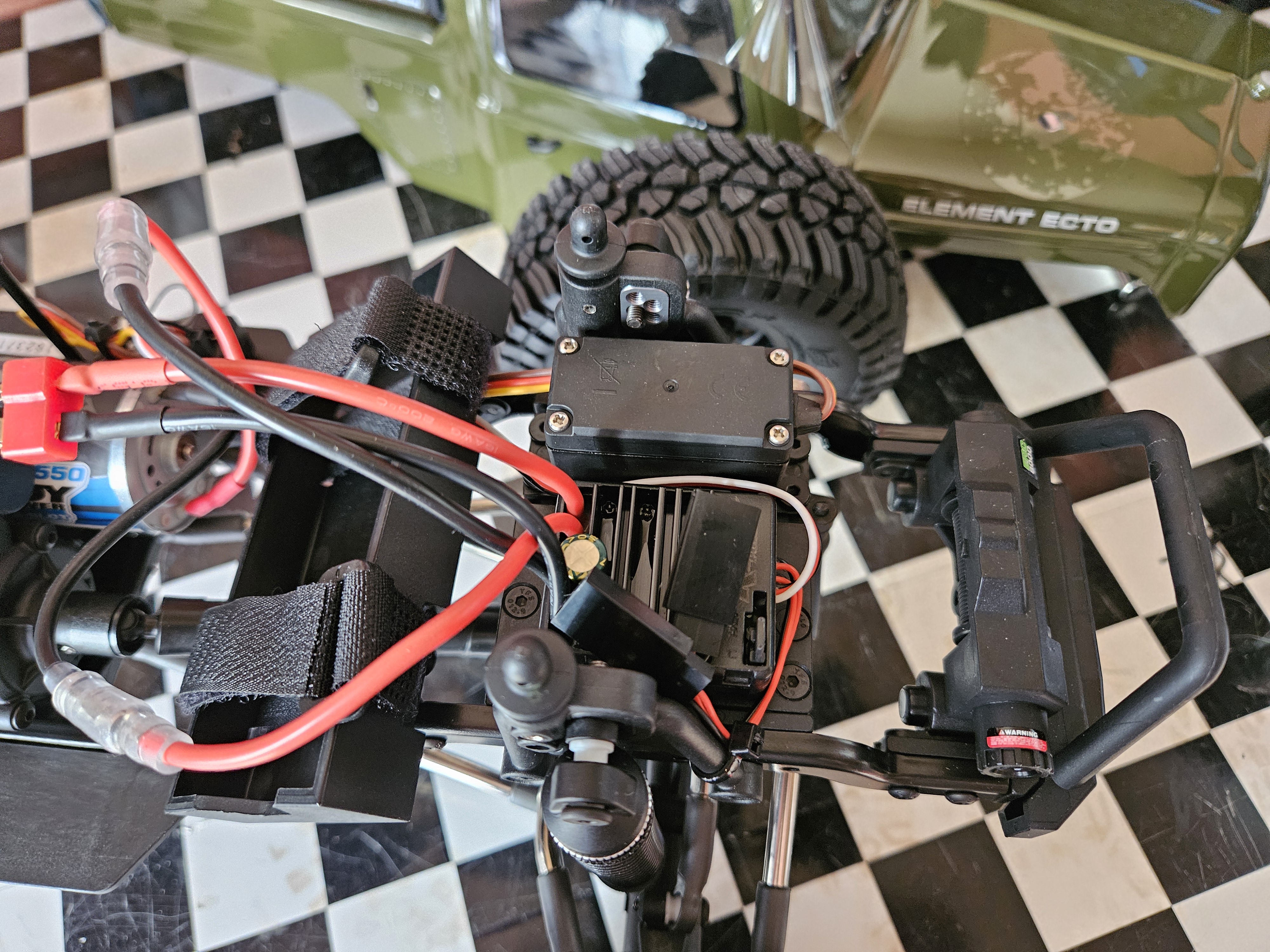
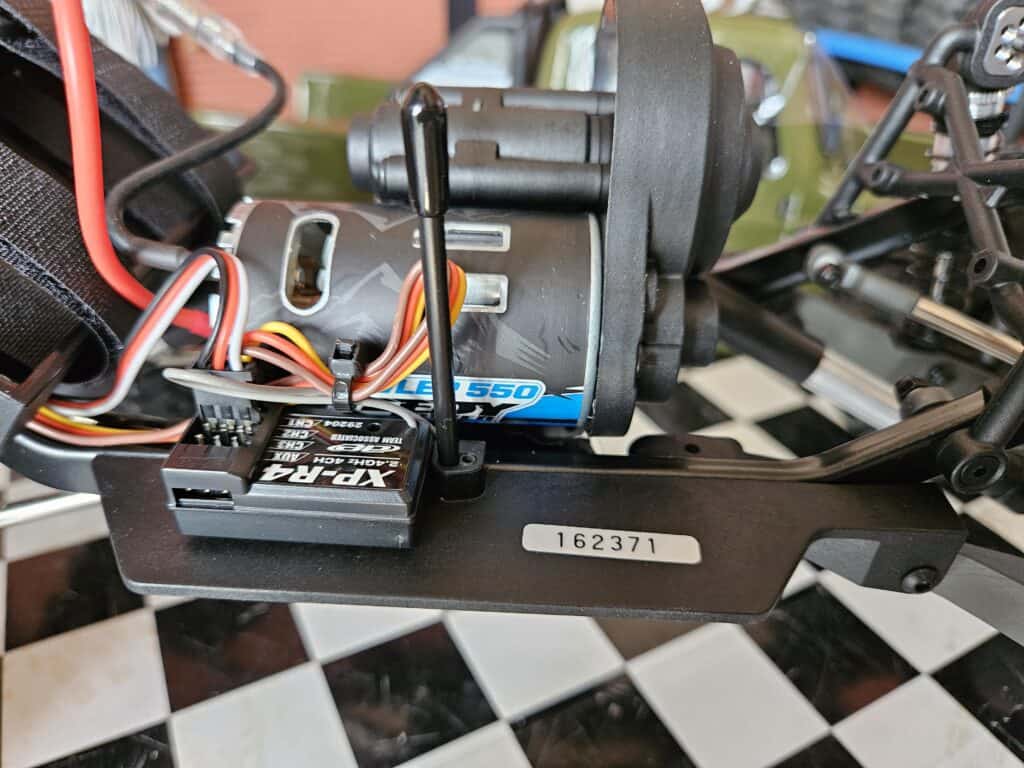
The original electronics consist of an ESC SC480X, F/R 80A 2s-3s, with a pair of outputs to directly power a permanent lighting. With a programming card, not supplied of course, it is possible to adjust the starting force, the cut-off, the drag-brake, the reverse and the punch. A jumper, set on Li by default, allows to configure for NiMh use if needed. The connector is unfortunately the dated T-Dean … it can be advantageously replaced by any other connector … except Tamiya of course, this wouldn’t be an improvement 😀
The receiver is installed on the left floor. If the radio is a 3 channel, the receiver is a 4 channel and has a curious servo socket on the side set … its use seems to be for binding with the radio and setting the failsafe … a function barely needed in crawlers. The motor is a 550 5-slot 14T … it seems a little fast for a crawler, but it is not intended to stay in my case so …
Début des modifications …
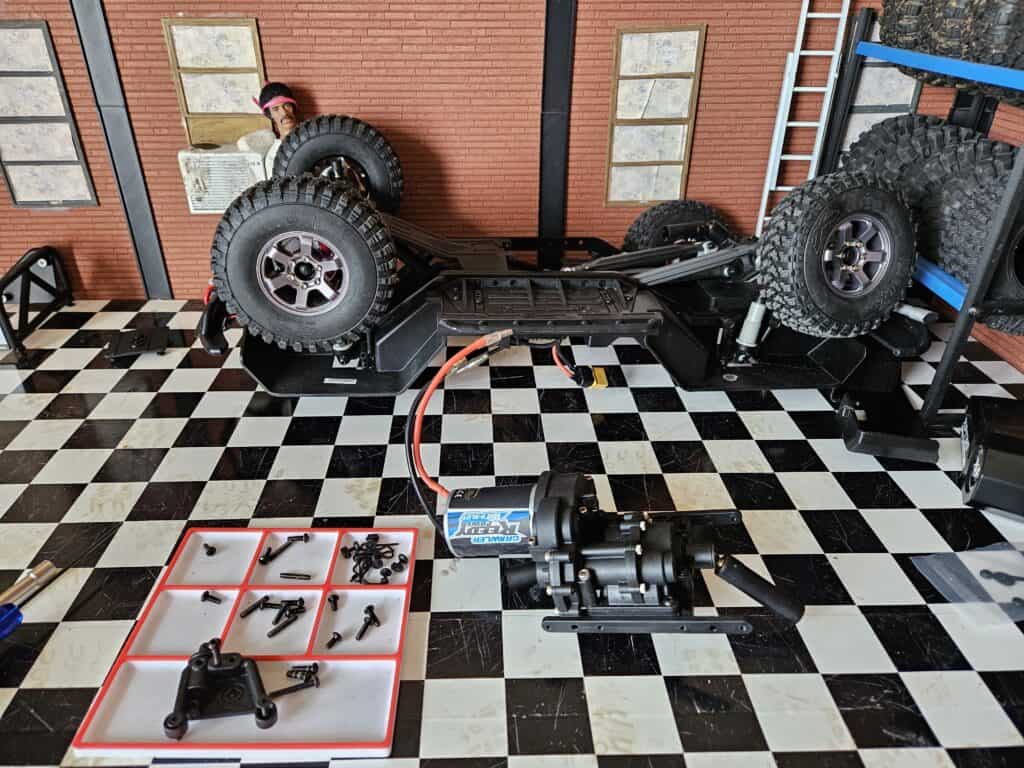
The initial plan consisted of swapping the Stealth XF of the Utron and the Stealth X of the Ecto … alas, my Utron is a bit of a black cat concerning the screws, I could possibly grant myself a share of the responsibility, this time, I had not touched this part before and both the pinion screw and the 2 motor screws are blocked. The Stealth XF therefore returns to the Utron.
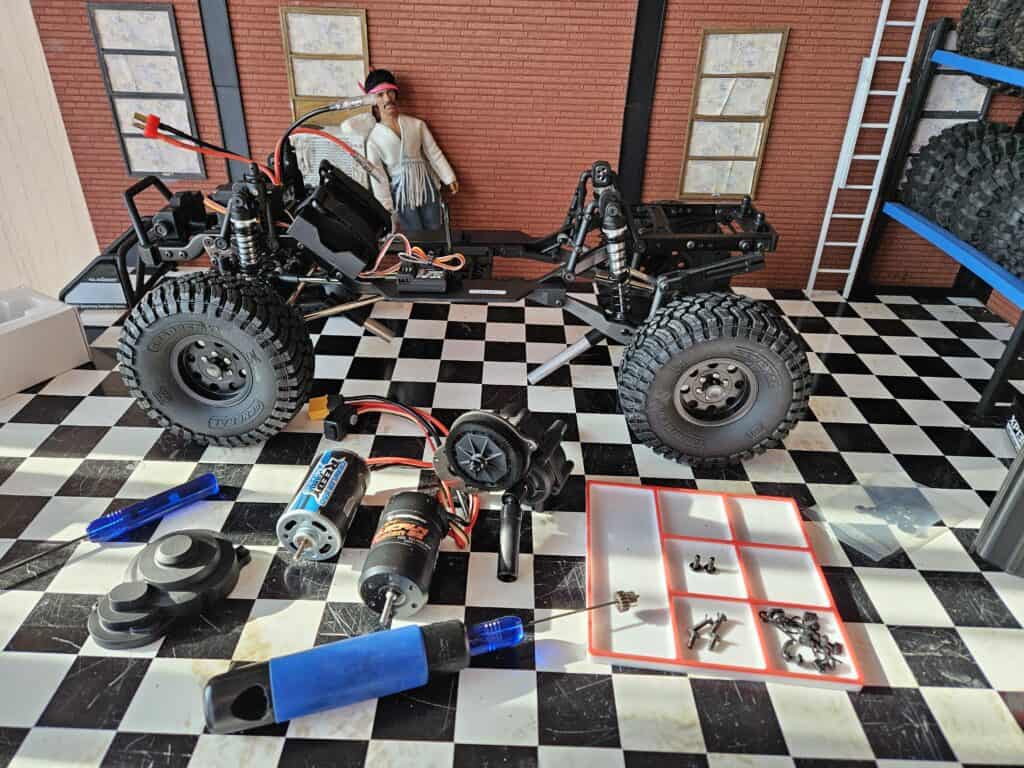
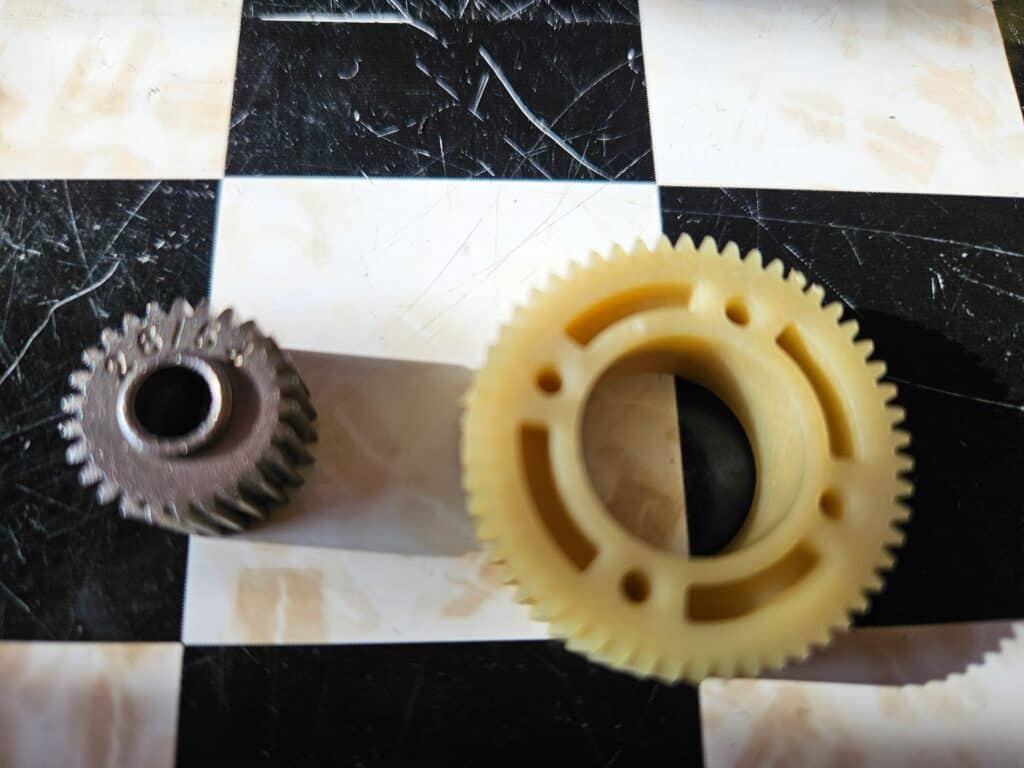
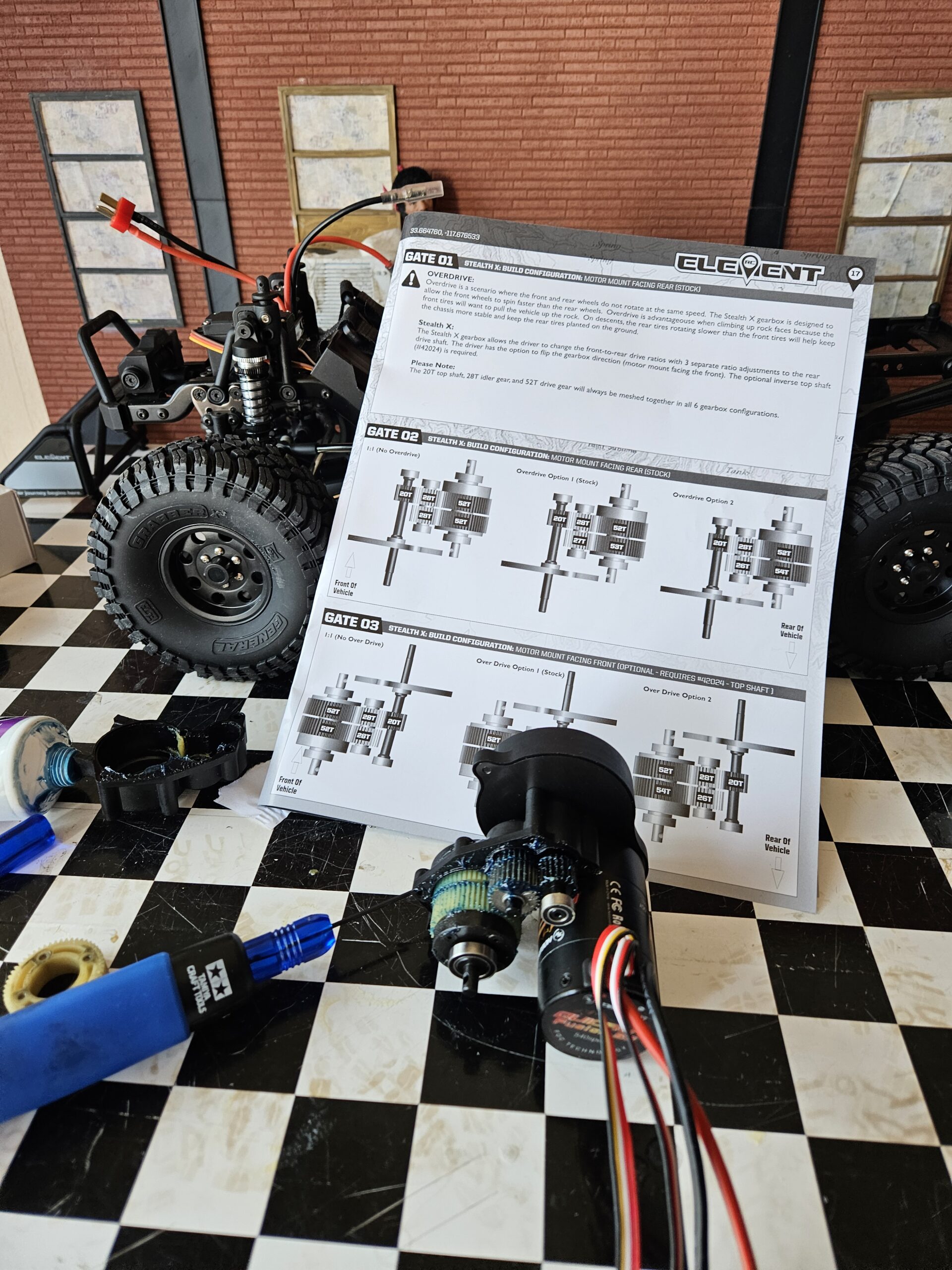

By default, the Stealth X is configured with 5% overdrive. In the accessory bag, a pair of 26/54 pinions is provided.
The difficulty of the operation lies mainly in the interpretation of the diagram provided … and taking into account that our Overdrive is in fact an Underdrive. The engine being positioned towards the front, it is necessary to base oneself on the diagrams or the engine plate is towards the rear … and therefore remove the shafts to install the new pinions at the bottom of the housing …
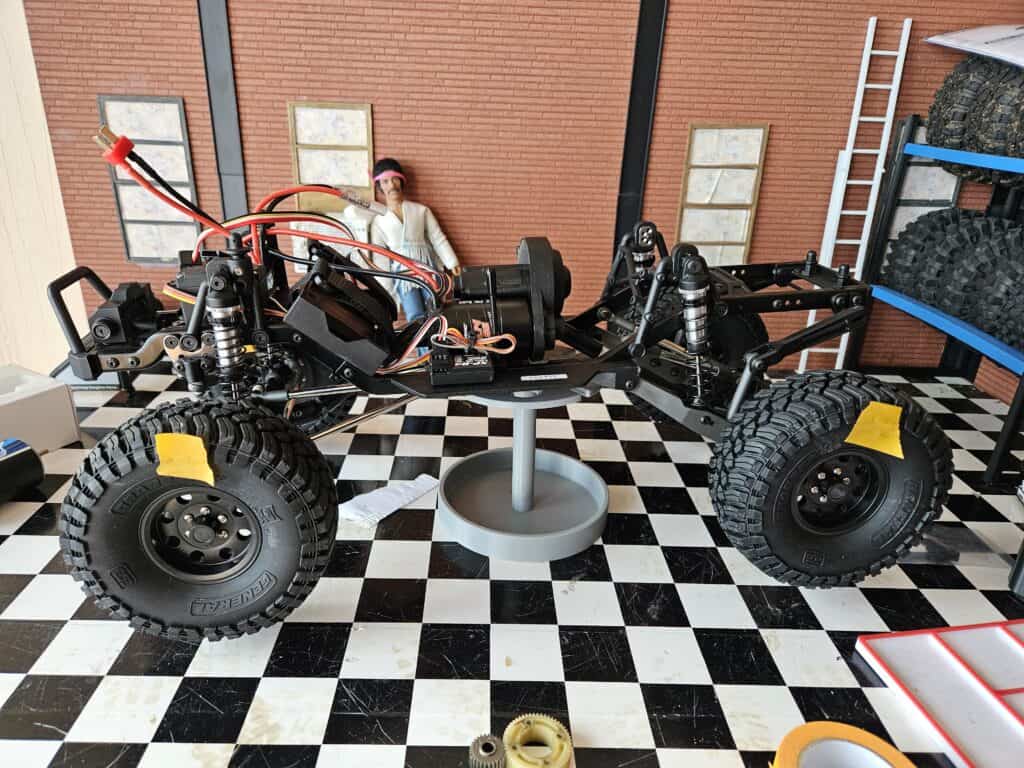
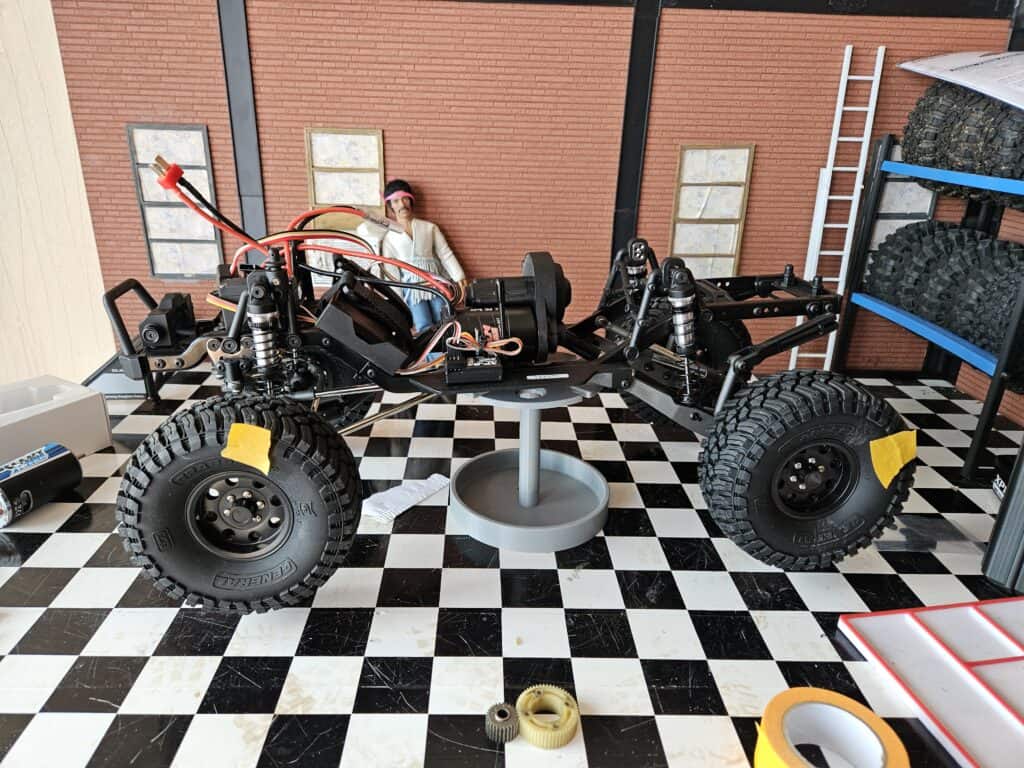
Et voila, 12% overdrive on the front.
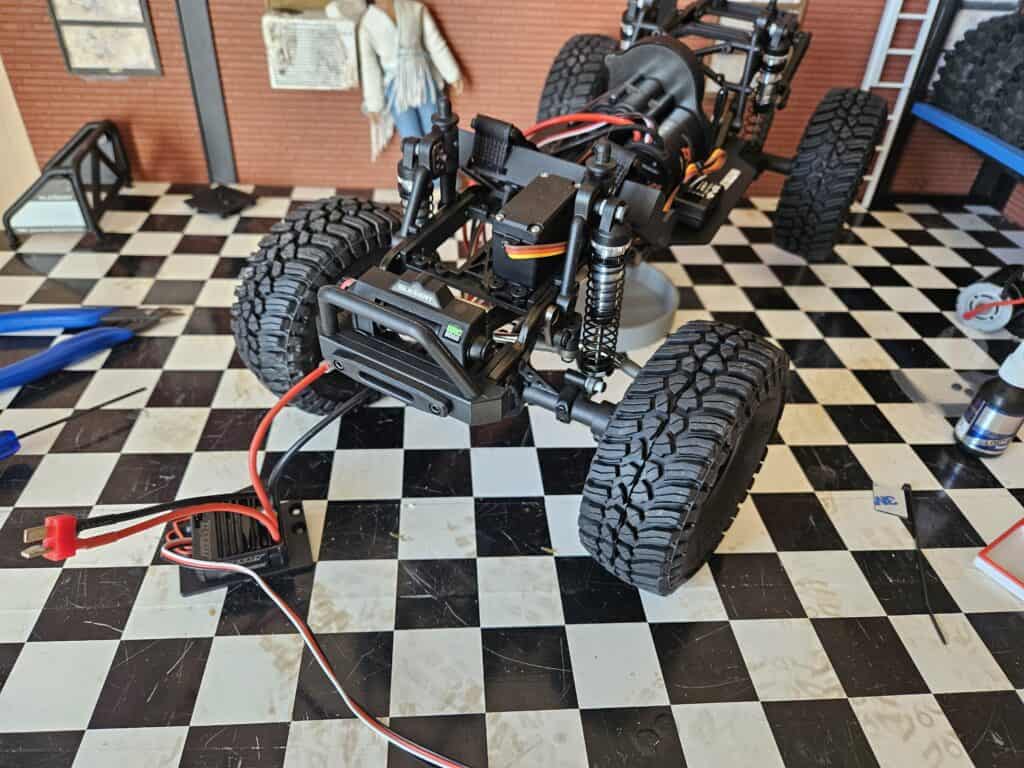
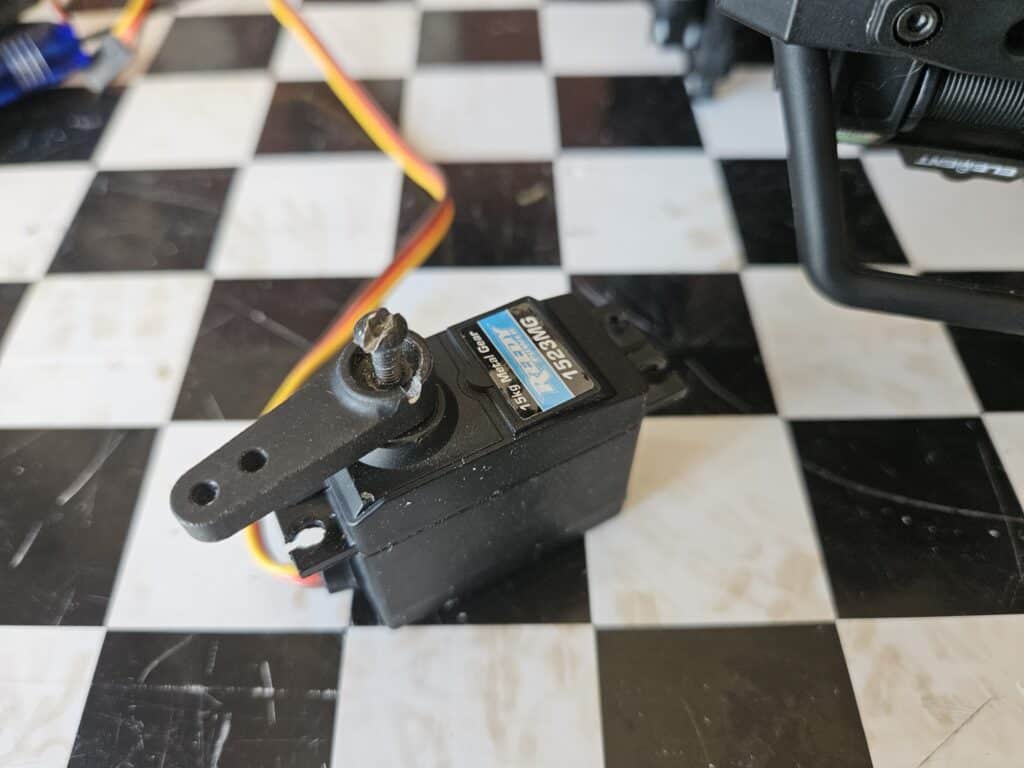
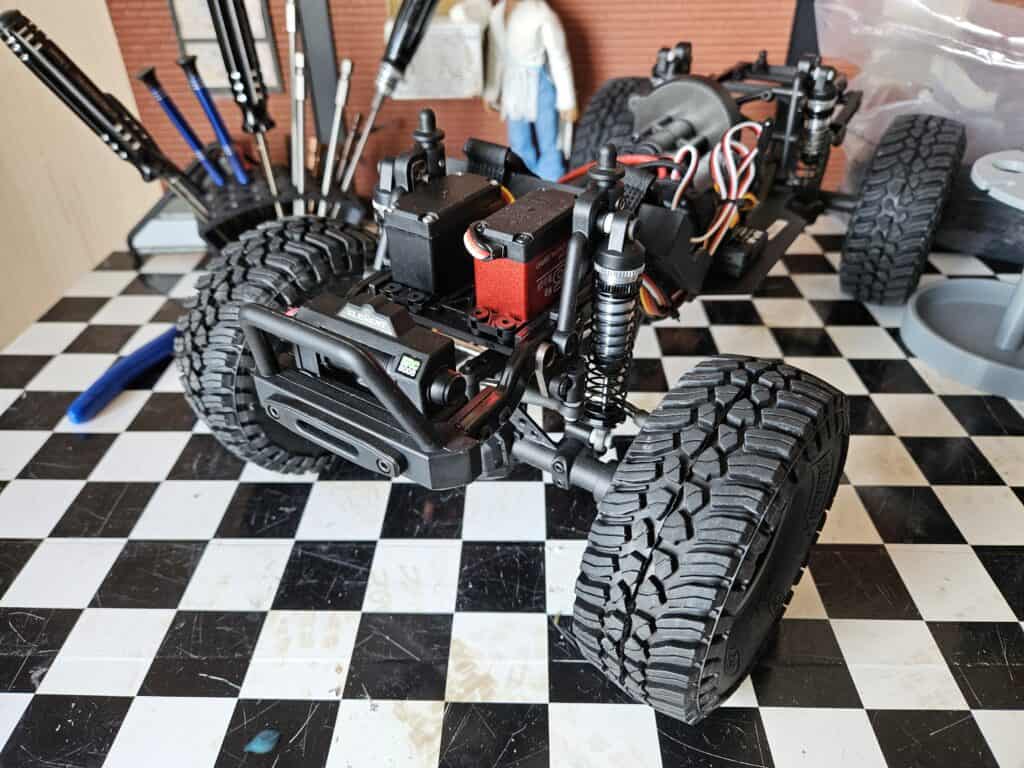
Not being in a pure performance objective, no SOA, but a servo-winch. The original steering servo is a good candidate for the transformation … even if the operation turned out to be much less fluid than presented in a very optimistic way on the video proposed by Element RC … between the screw of the rudder which required to take out the Dremel because of a screw with a screw head screwed from the factory (definitely) and the impossibility of removing the bearing allowing access to the imprint of the potentiometer (forced to cut the head of the potentiometer finally) … it required a lot of work for a fairly simple operation at the base … but at least this time, it worked, the servo of the Utron didn’t liked the intervention at all. A 25kg “amazon” takes the place on the steering side, and the plate supporting the ESC is replaced by the servo-winch, which does not yet have its drum.
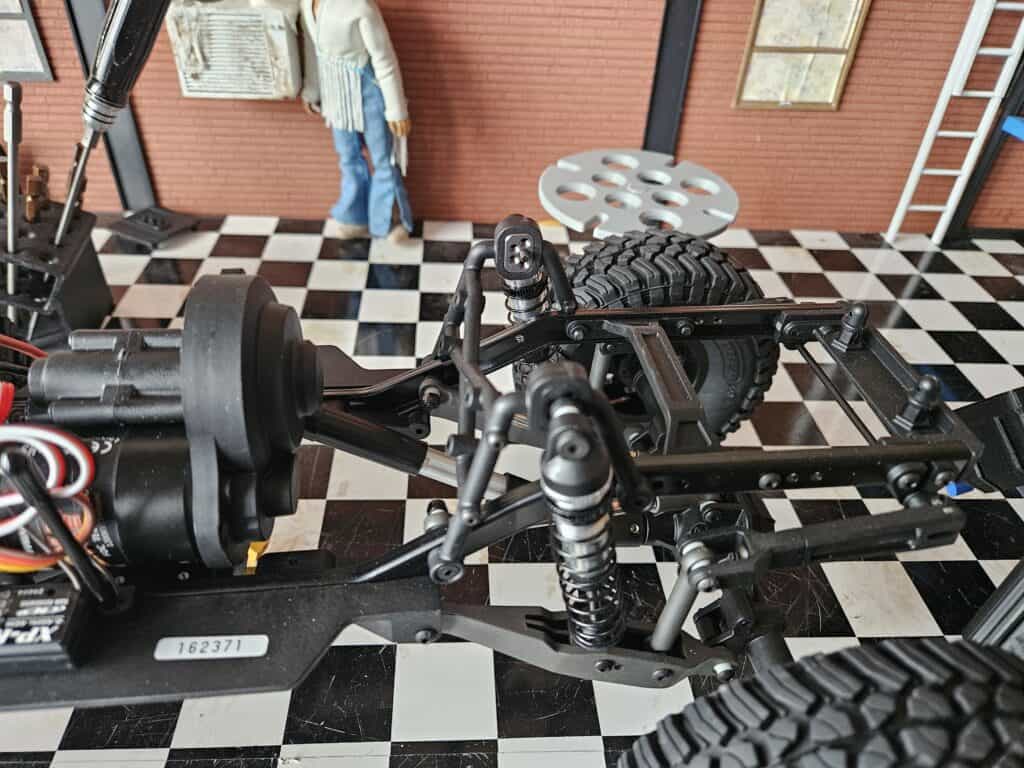
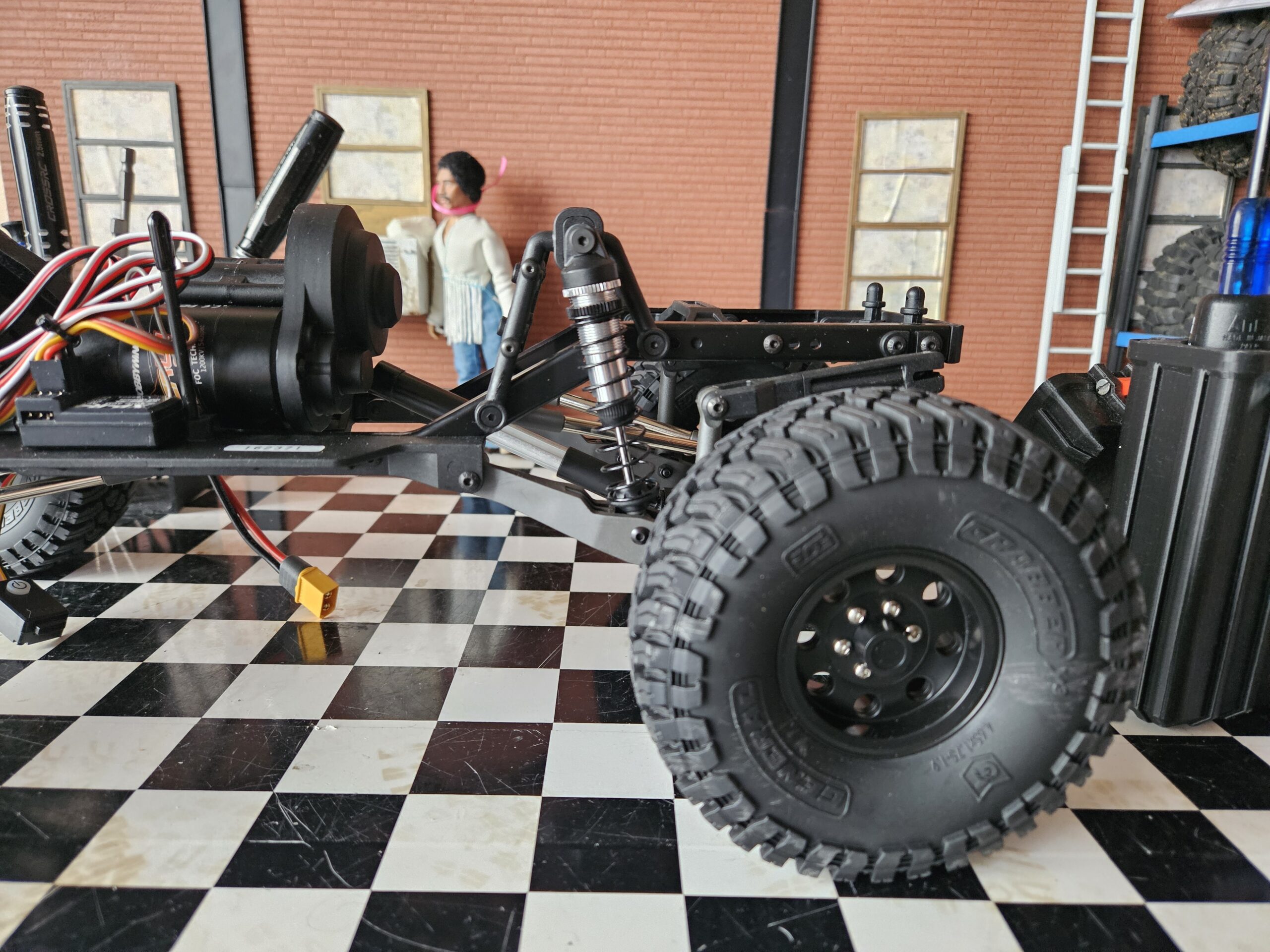
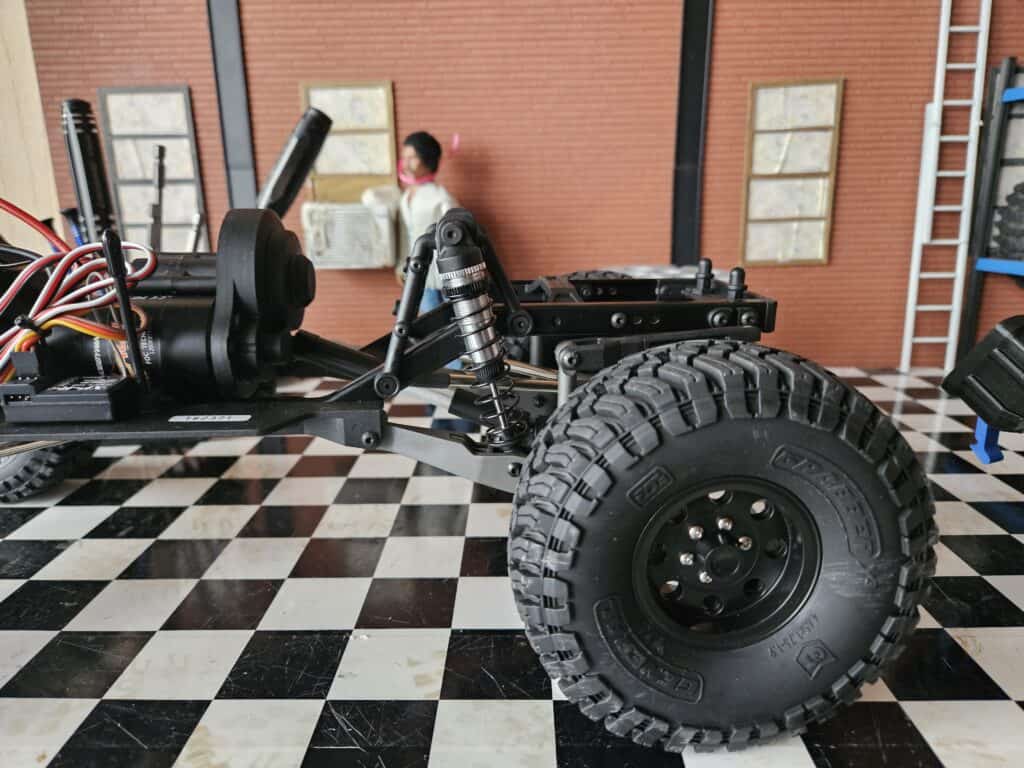
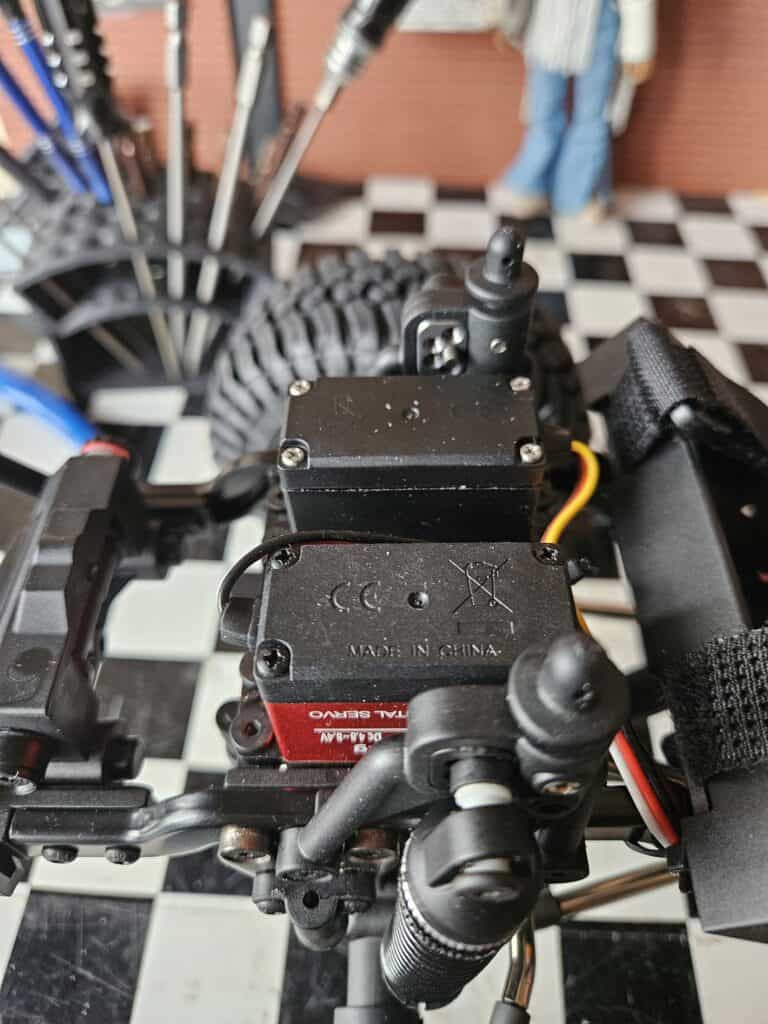
In order to lower the center of gravity a little, a very simple manipulation … raise the upper attachment by one hole. At the rear, this involves turning the metal insert and its plastic face in order to maintain the angle of the shock absorber. At the front, just move to the upper hole. The difference in ground clearance is not huge but it’s always something.
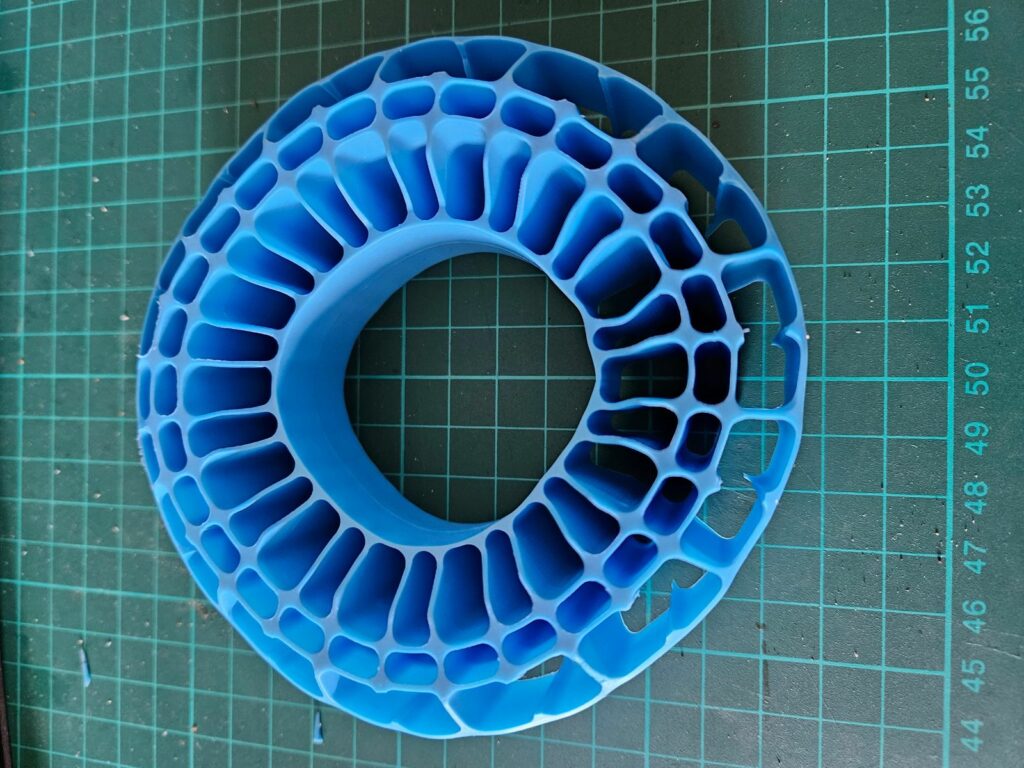
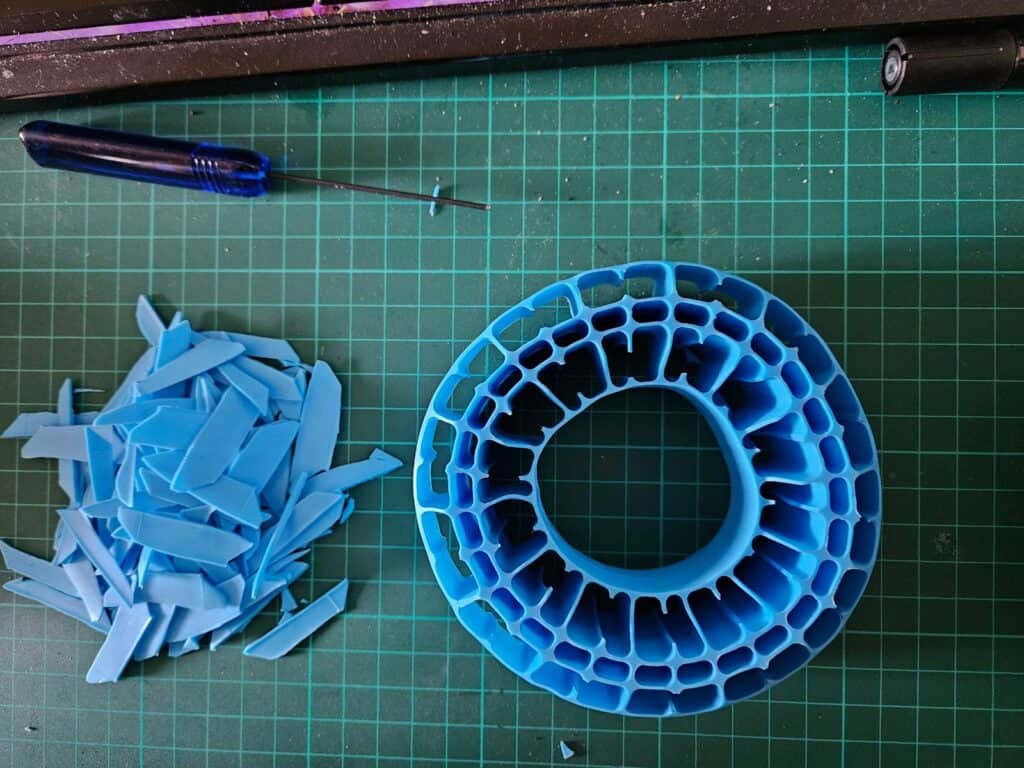
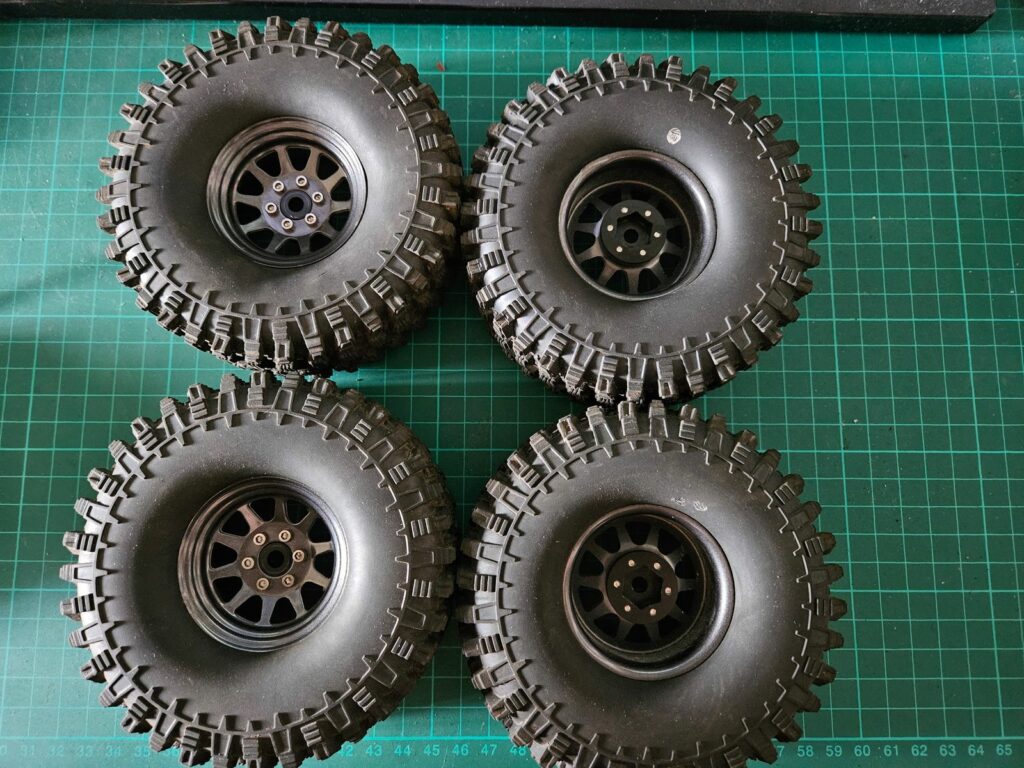
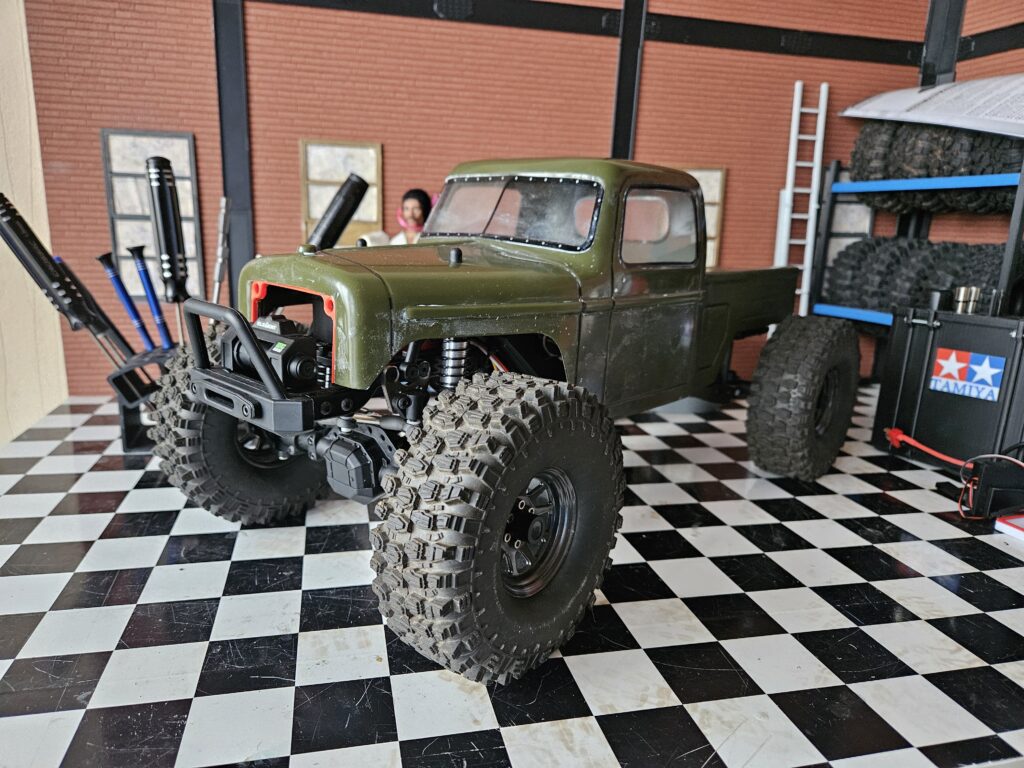
The original tires are superb and I was tempted to try cutting an outer stud out of 2 … but their look will be more at home on a touring vehicle, maybe the FJ40, and I had the original tires of the Mashigan which were mounted on a U4 project without end or specific objective. The Crawler Canyon channel had tested the Injora silicone inserts on its platform based on Enduro SE … at 20€ for 4 inserts, it’s worth a try … I opted for a soft configuration (1 rib out of 2 cut on the outer ring + 1 rib out of 2 cut on the inner ring) on the front to promote grip and medium (1 rib out of 2 cut on the outer ring) on the rear to avoid too much crushing … we’ll see with use.
Since the Sherpa, I have learned to appreciate tilting bodies. I still need to work on the front … it will probably be a velcro attachment, while keeping the studs for centering, but either planed flush with the body, or replaced by printed exhaust outlets …
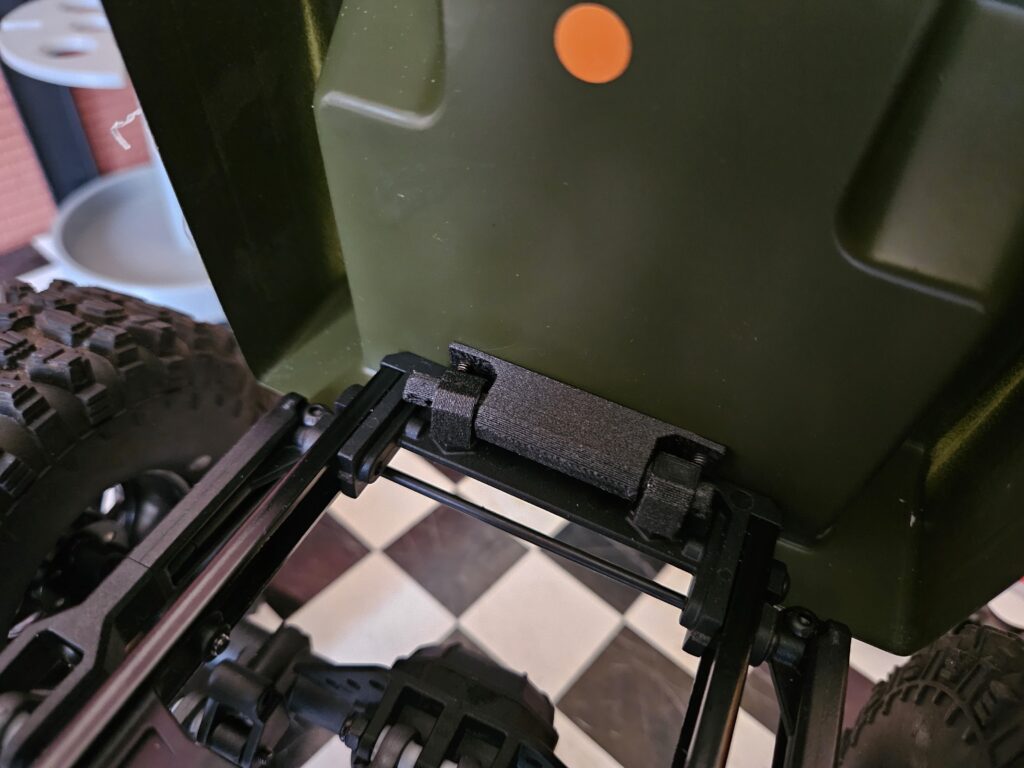
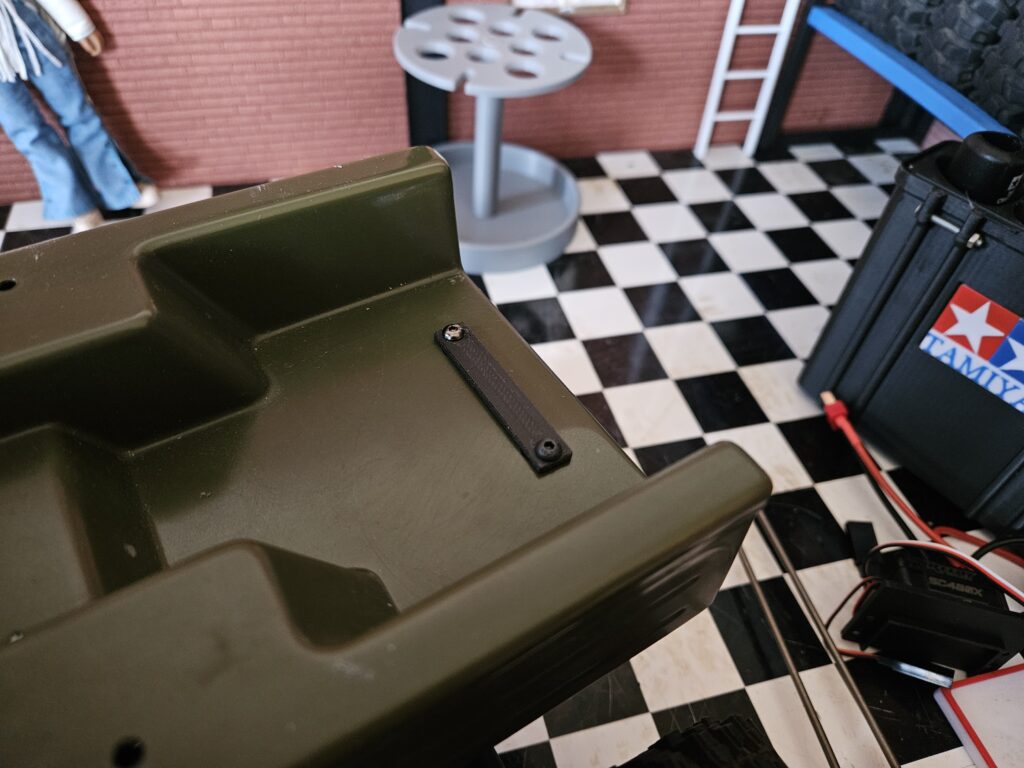
https://www.thingiverse.com/thing:6134304
The parts were printed in PETG-CF for its resistance. Normally a body post is used but I didn’t have one long enough, so I printed one, still in PETG-CF.
The author of the system recycles the front fake winches to screw the pivot and offers a plate as an alternative solution … it’s nice, but it lacks realism.
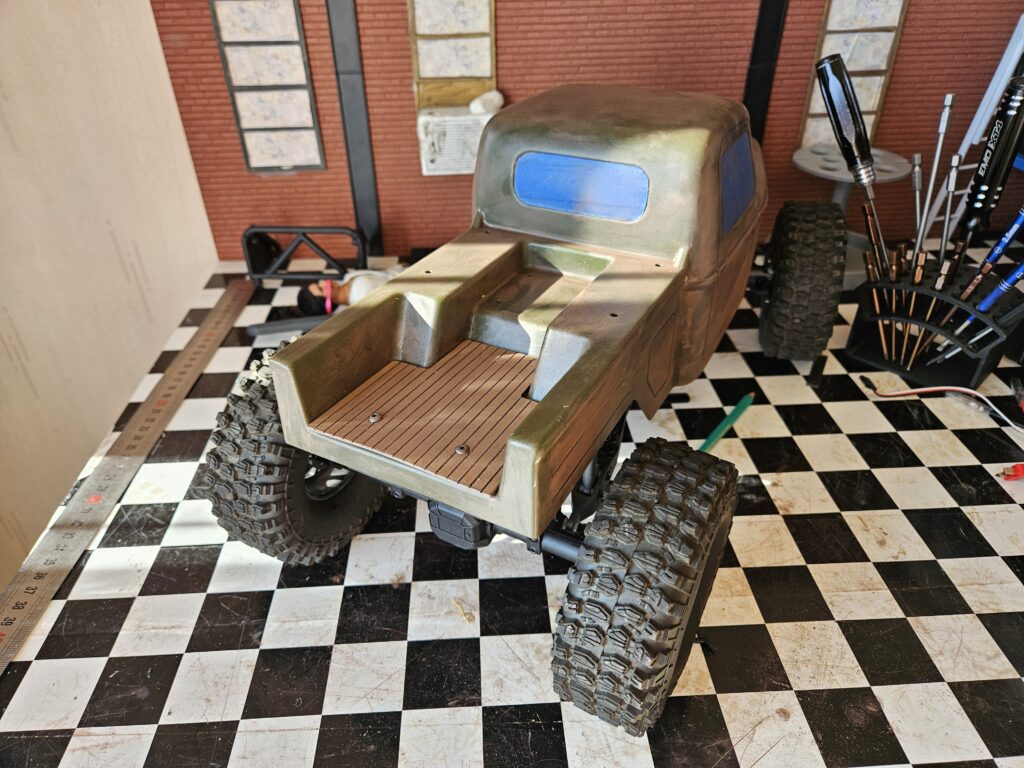
The floor will certainly not hide the screws, unless it is made excessively thick, but it will be more uniform.
Element has not provided a dedicated interior, but it is possible to use the interior of the Gatekeeper, with a few more or less adjusted cuts. The icing on the cake is that you can reuse the cage screws to hold the interior at the back, the front will be held by a piece of hook&loops, or double-sided tape for a more permanent installation.
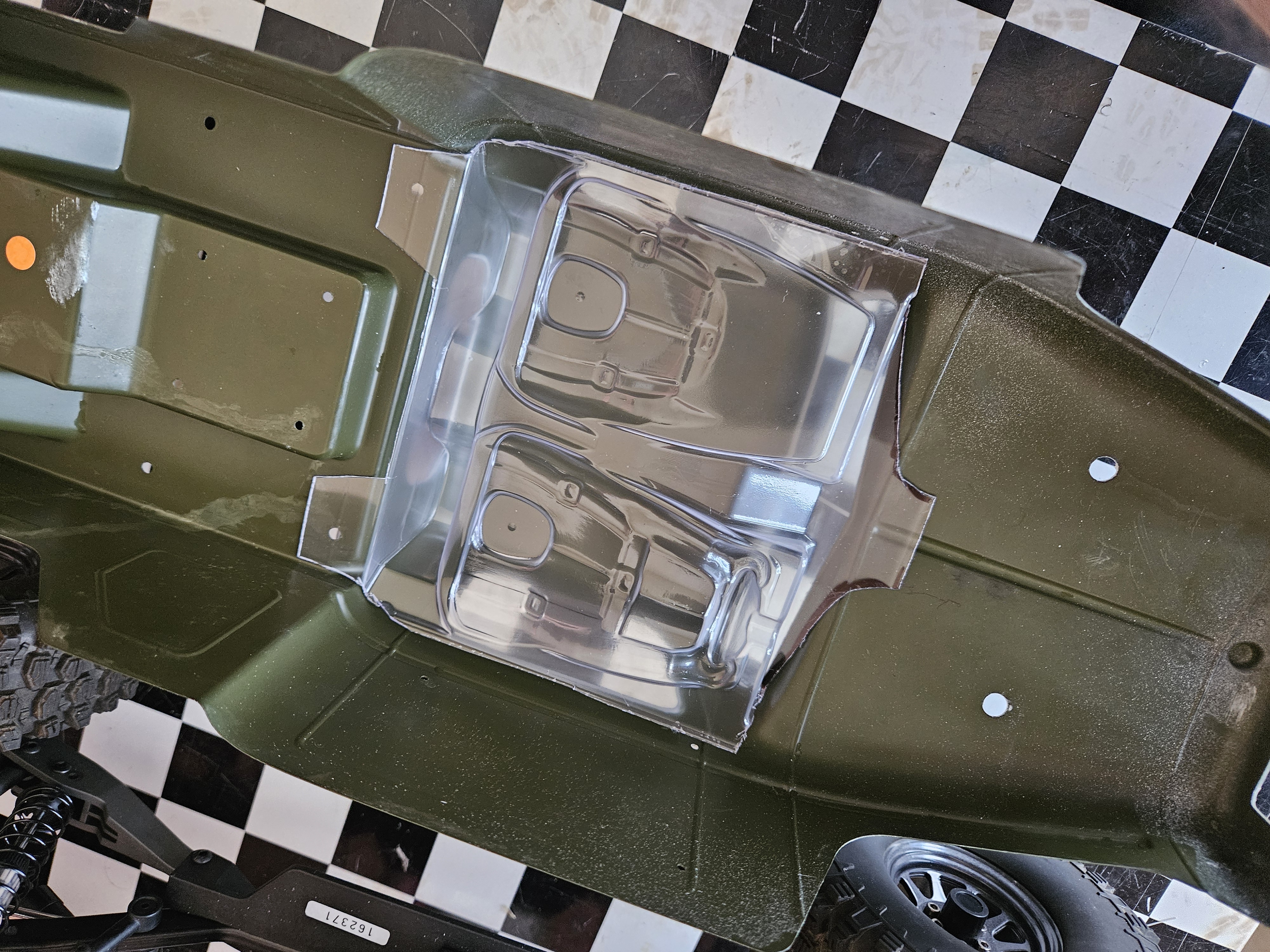
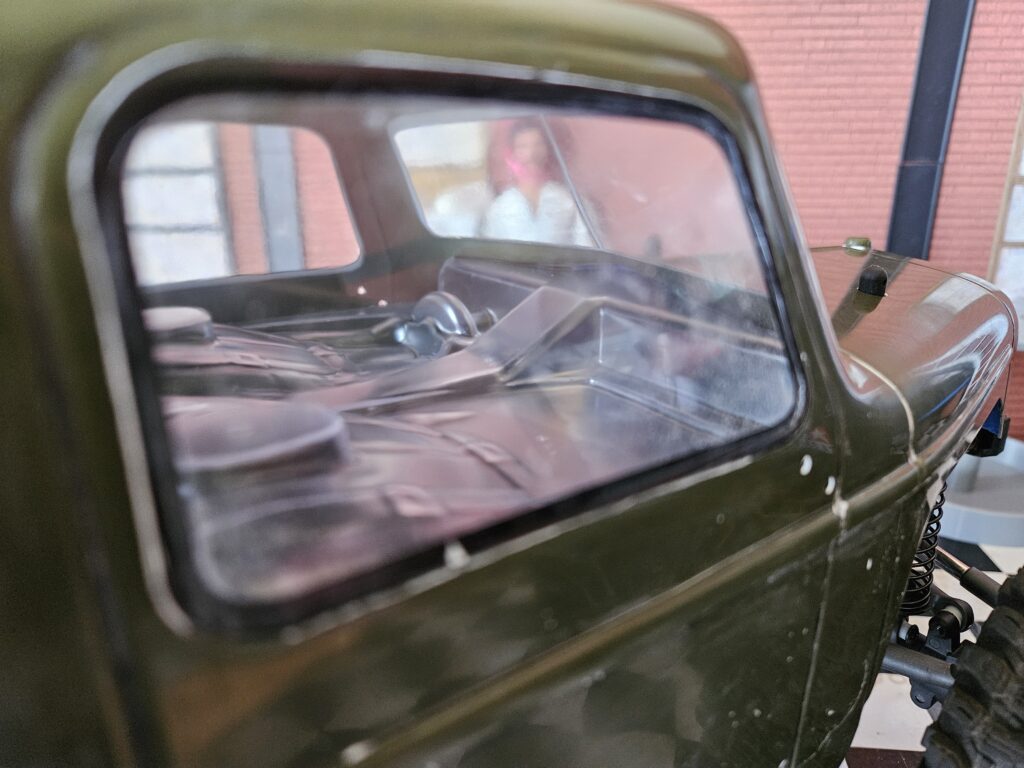
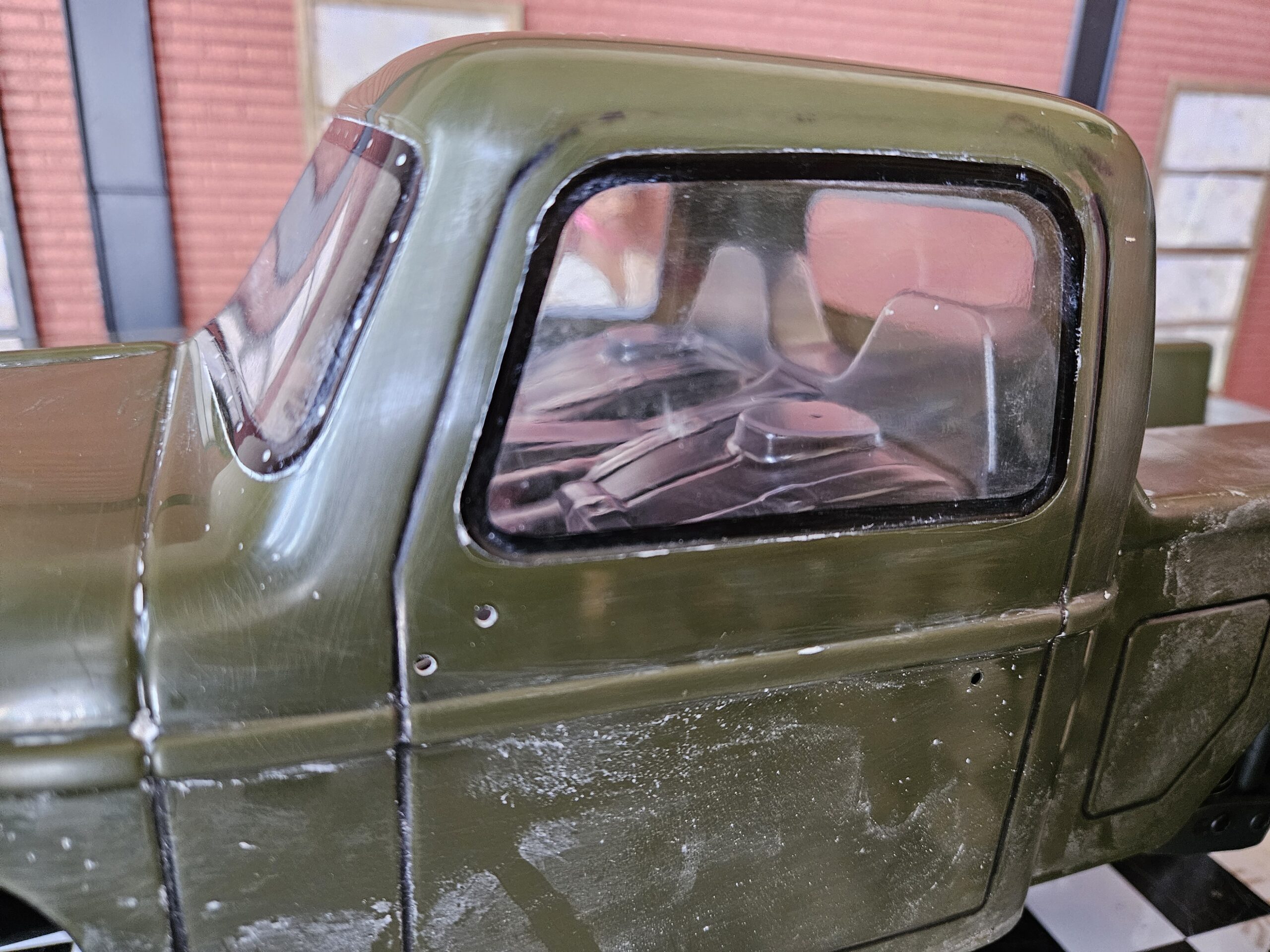
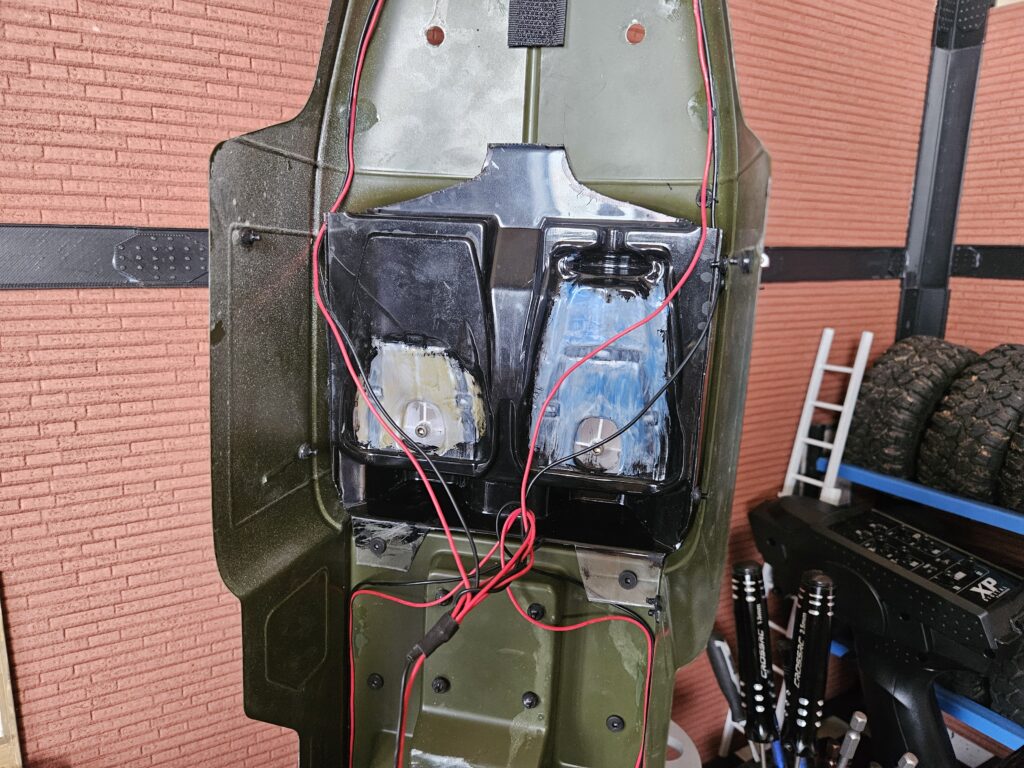
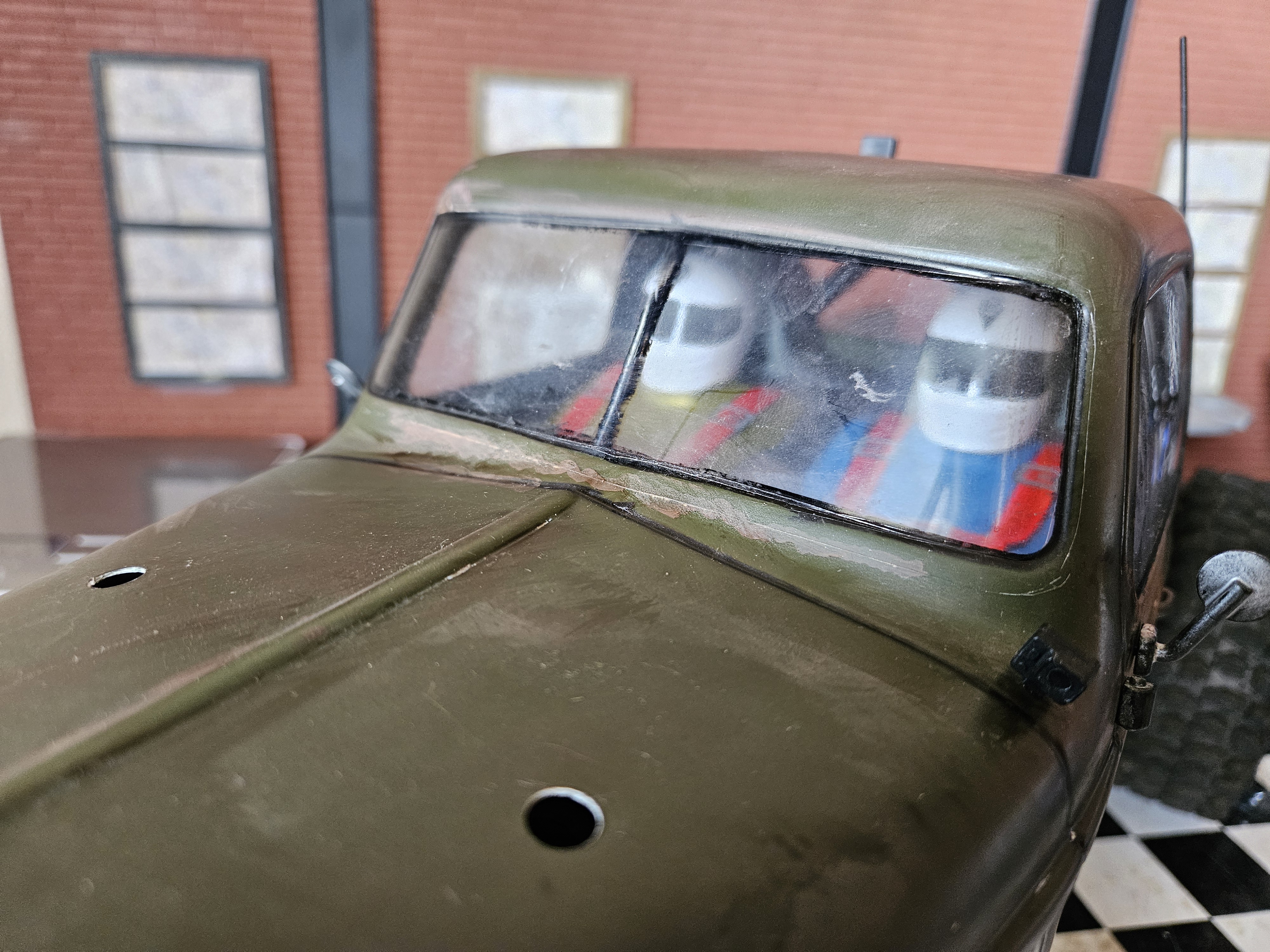
3D printing comes to the rescue again for lighting and keeping the body closed.
The grille having been cut to reveal the engine supplied by Element. This one has been slightly remixed to be monobloc and in a more “racing” version with an electric water pump instead of the fan. Unfortunately it is not possible to use the air filter supplied by Element, there is not enough space under the hood, but a small modification of the intake pipe offers a ready-made support for a piece of velcro.
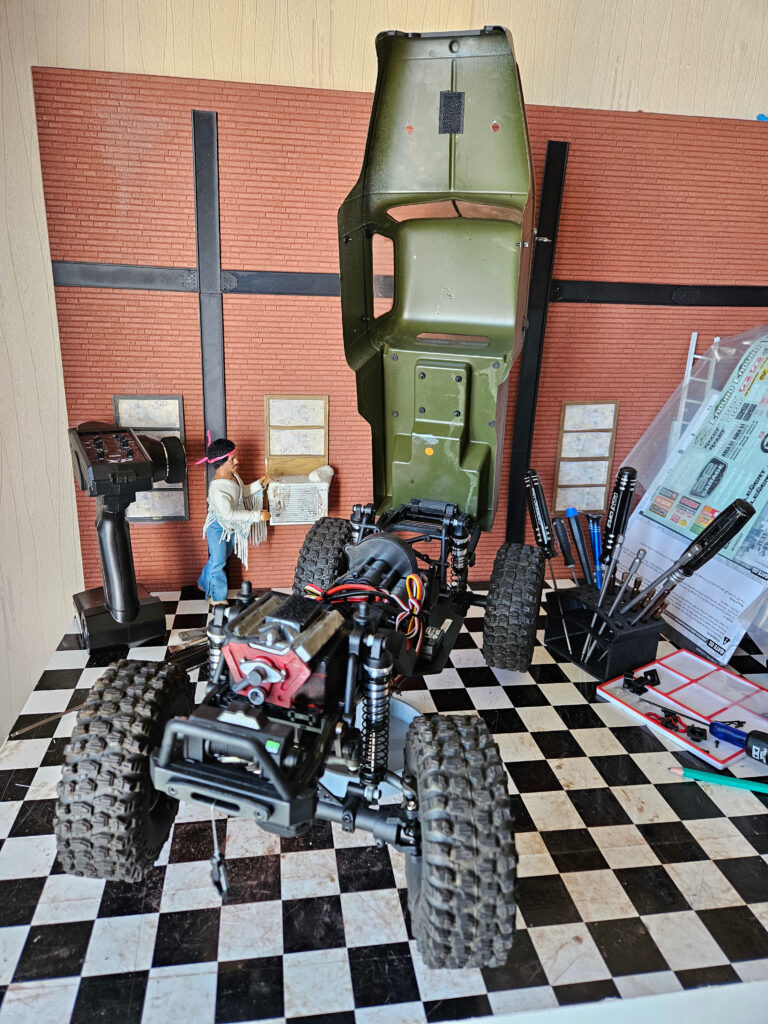
The grille, cut out, receives an insert serving as a support for a pair of 5mm LEDs for the front lights.
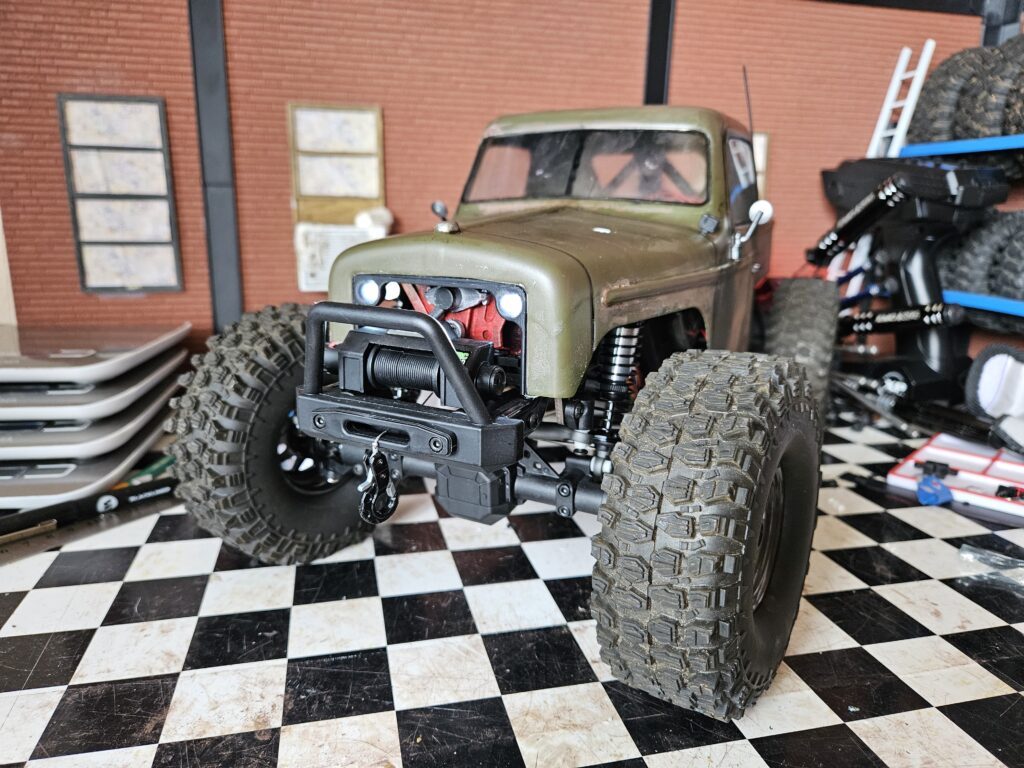
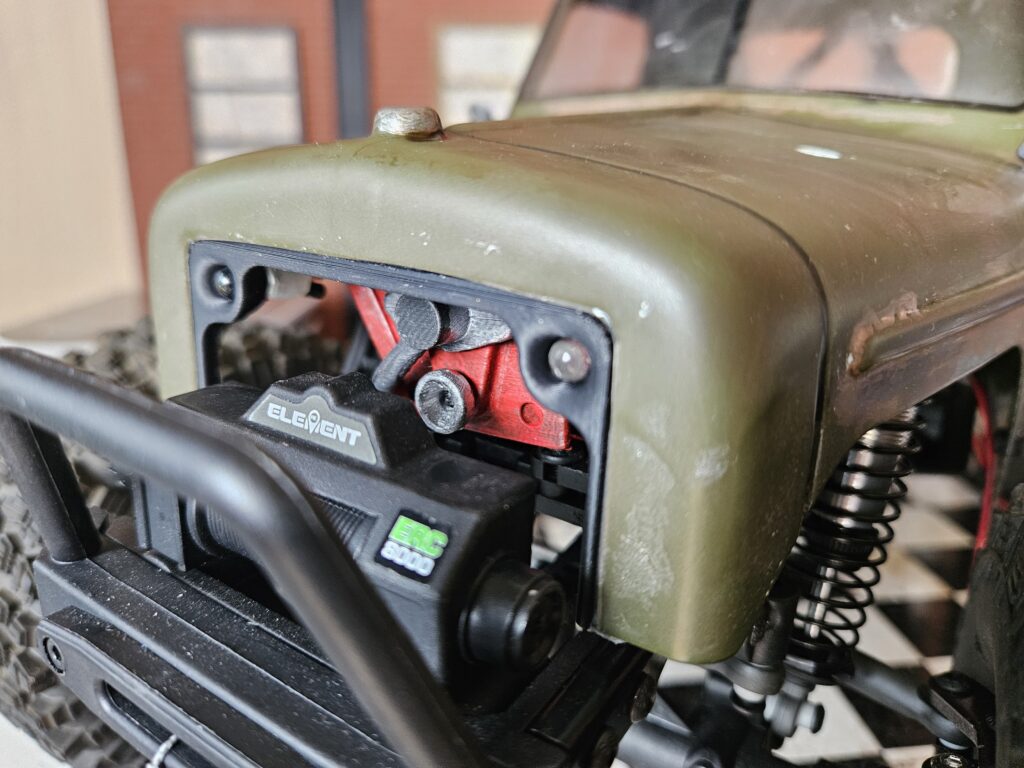
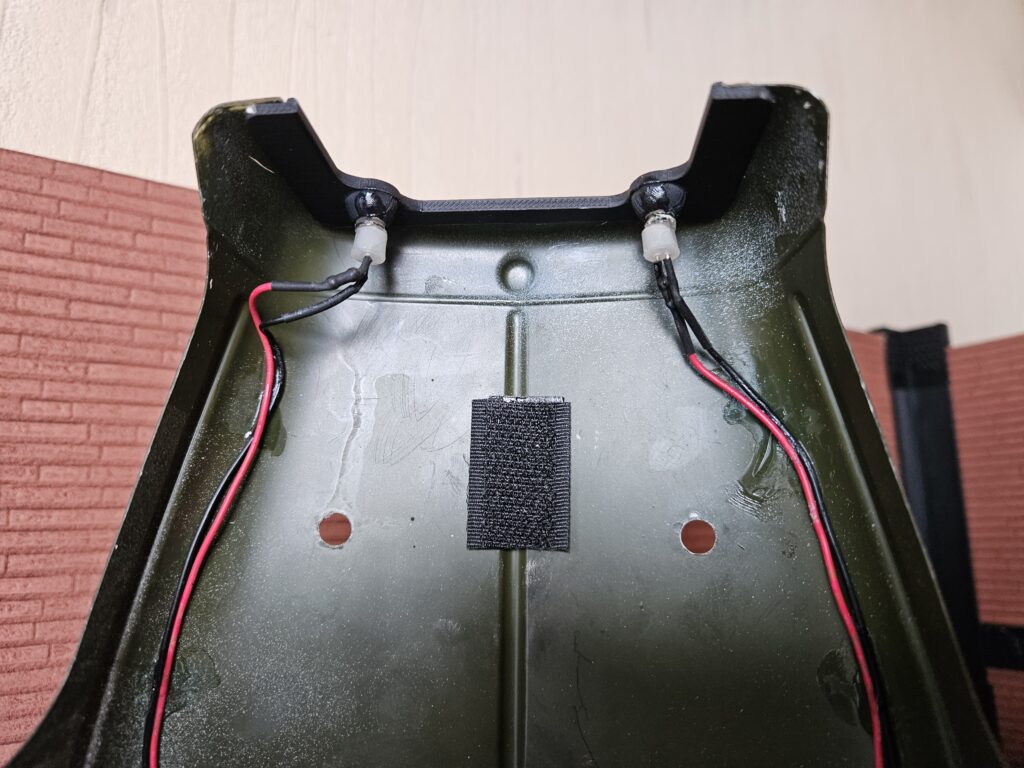
The stickers for the rear lights have long since disappeared, they have been advantageously replaced by “military” lights designed to accommodate a 5mm red LED, which only appears on the lower part.
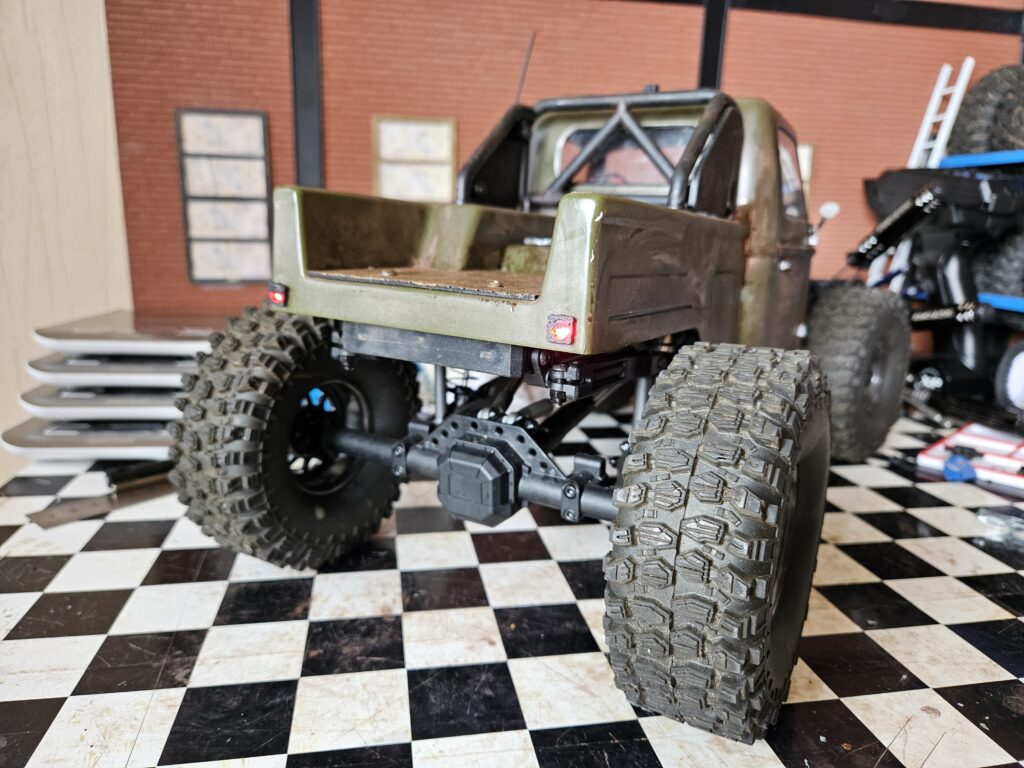
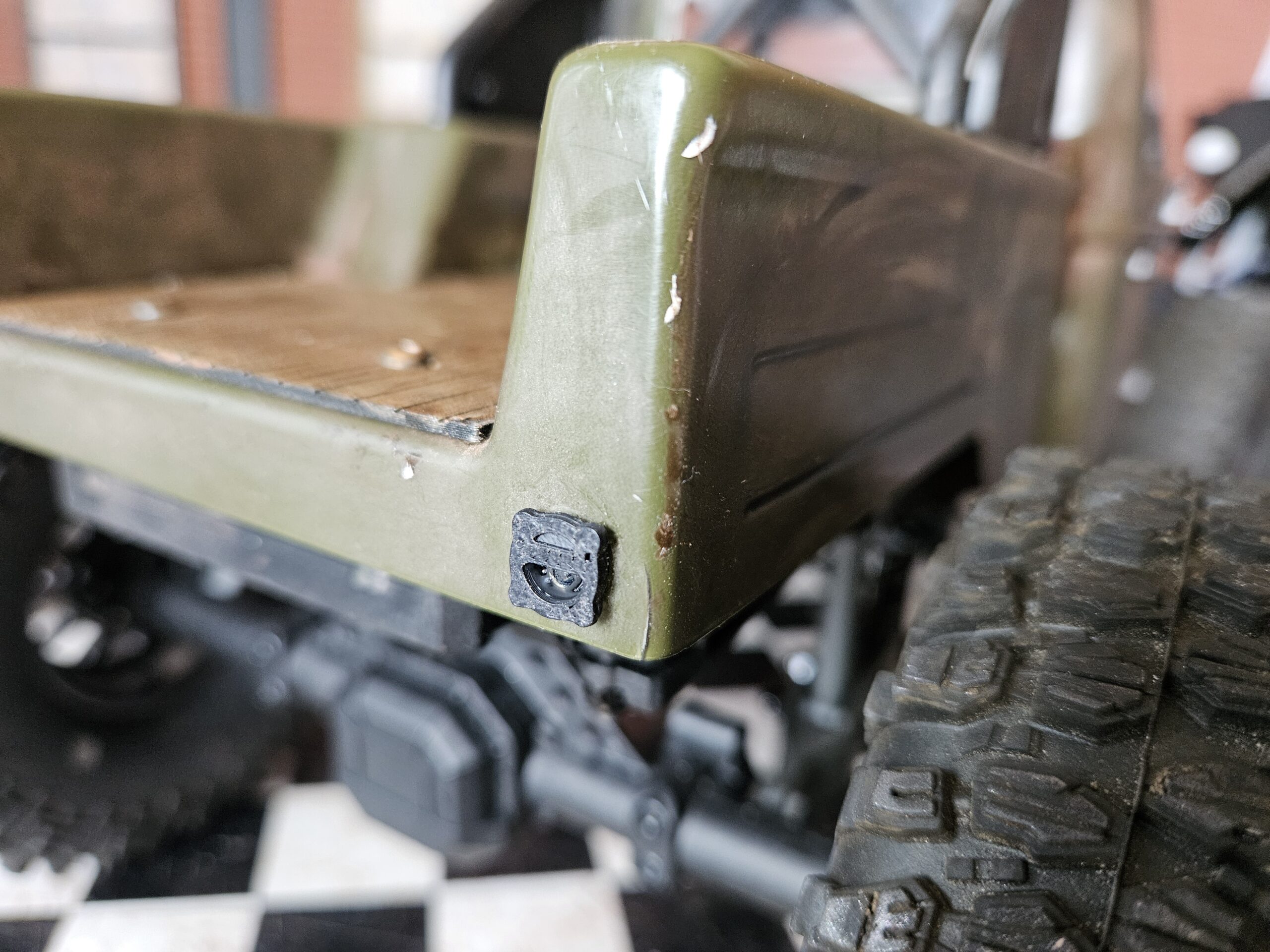
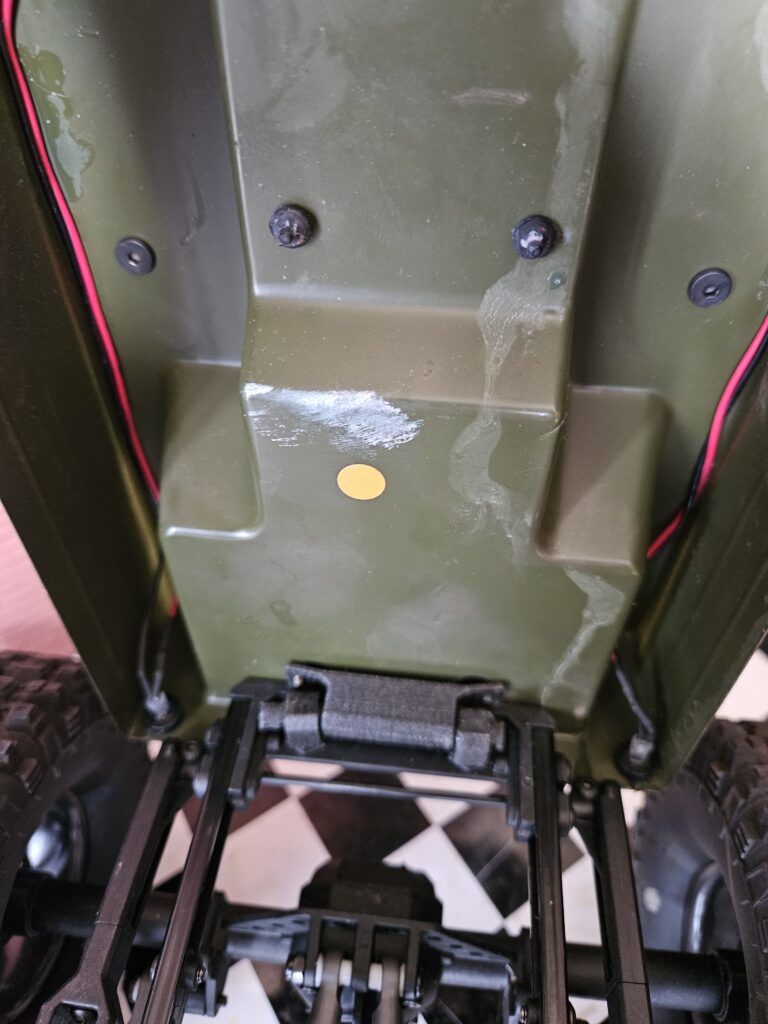
Battery tray replacement. The one installed is too short for my 3s, and the full-size is too wide for the body. I modified and printed a “low profile” version that involves flipping the bracket over, it is a bit wider without distorting the body like the full-size tray.
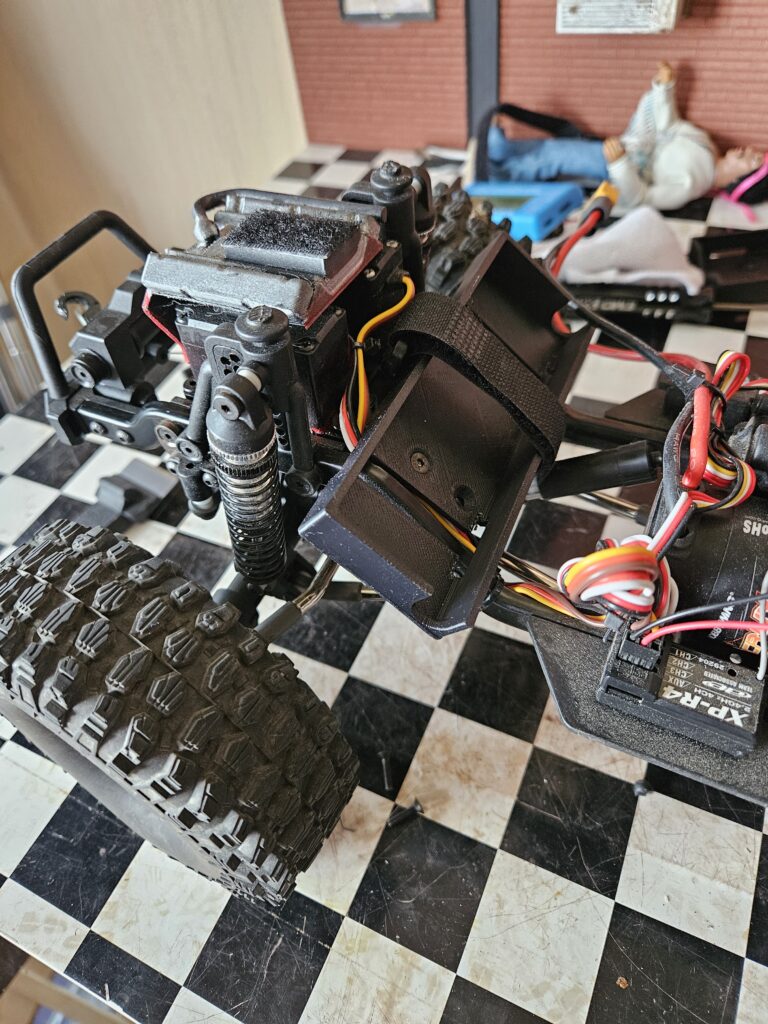
The front shock absorbers have also moved to the body mounts so that the body is more horizontal, and the Panhard rod plate has been raised, which should have been done in the previous configuration, the lowering leading to a change in the front geometry.
Last modification … correct the caster angle of the front wheels. By default it is more or less at 0, which is far from ideal. To correct it, we start by removing the rear steering link and the Panhard bar (no need to disassemble it on the chassis side, the axle side is enough), then we pivot the steering knuckles and we reassemble the steering link, still at the rear but this time above the arms of the knuckles. For the Panhard bar, we can draw from the bunch of plastic shims supplied with the vehicle … a 5mm spacer, and a longer screw allow me to reinstall the Panhard bar, which would otherwise come into conflict with the shock absorber.
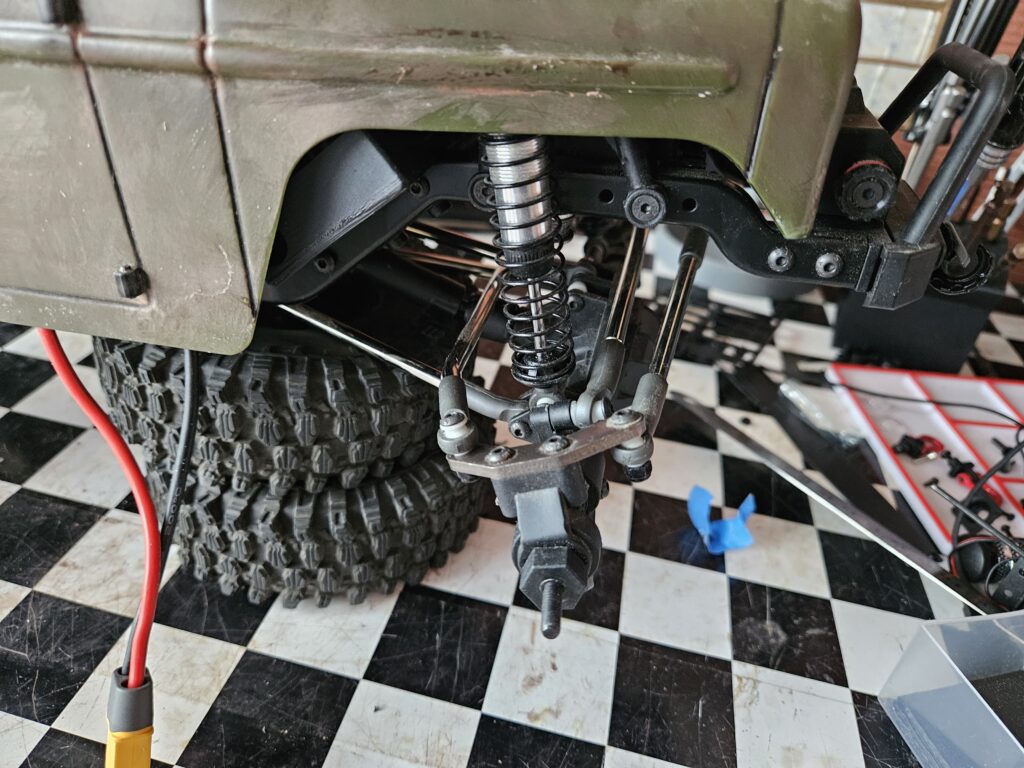
Depending on how the steering link was assembled at the factory, it may be worth tightening it using the entire link thread in the ball joints, this helps correct wheel toe-in. This was not necessary in my case.
According to this video https://www.youtube.com/watch?v=6vz8nU4mxX4 the center of gravity of the Ecto, battery installed (3s 2200mAh softcase), with a mass distribution of 57/43, would be:
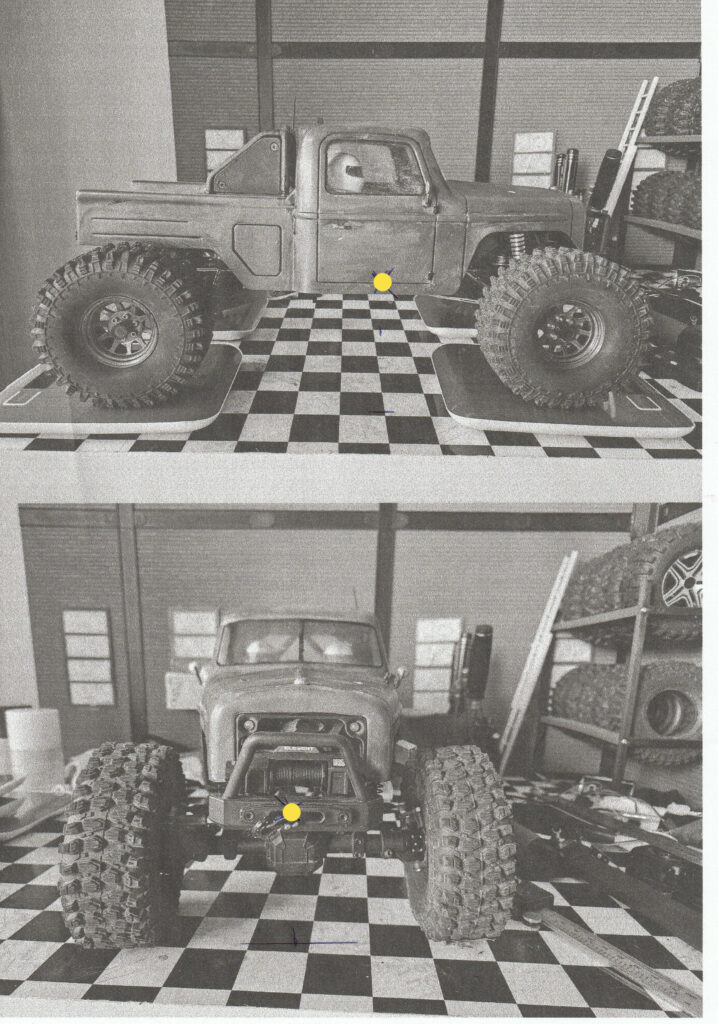
On the front , and slightly offset to the right… not exceptional but not too bad.
Sales … a pair of Fastrax brass stub axles… 2×80 directly on the bridge, that’s not to be refused.
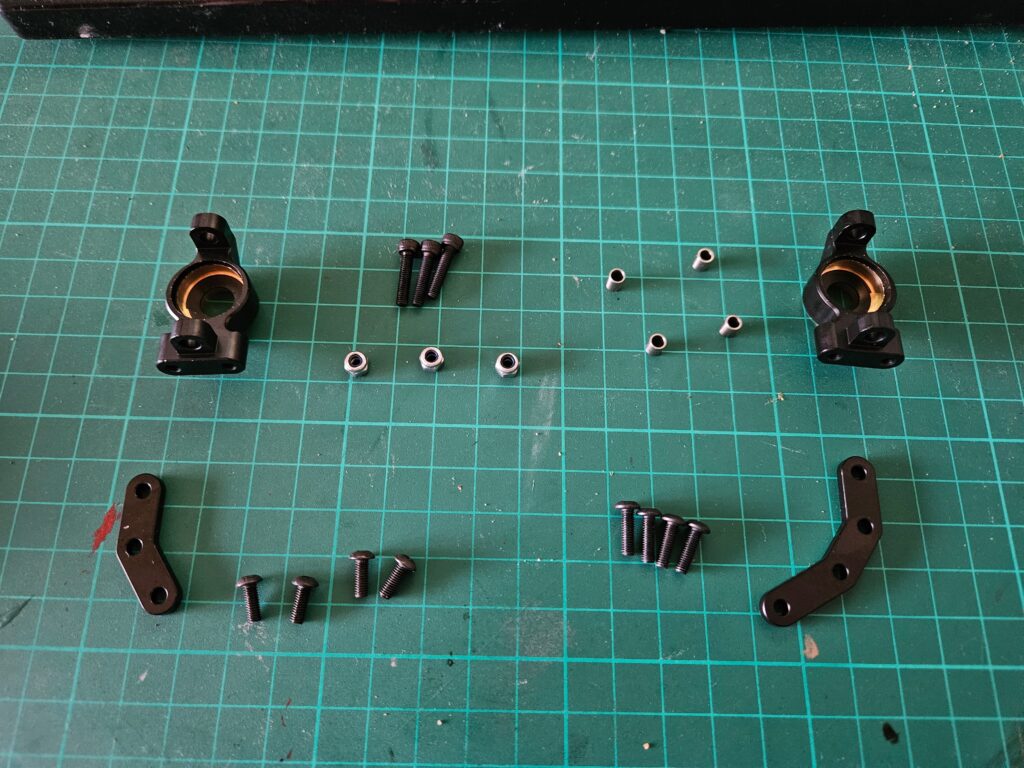
Nothing too complicated, just disassemble the originals, assemble their brass equivalent by reusing the bearings and paying attention to the orientation of the brackets, and install them.
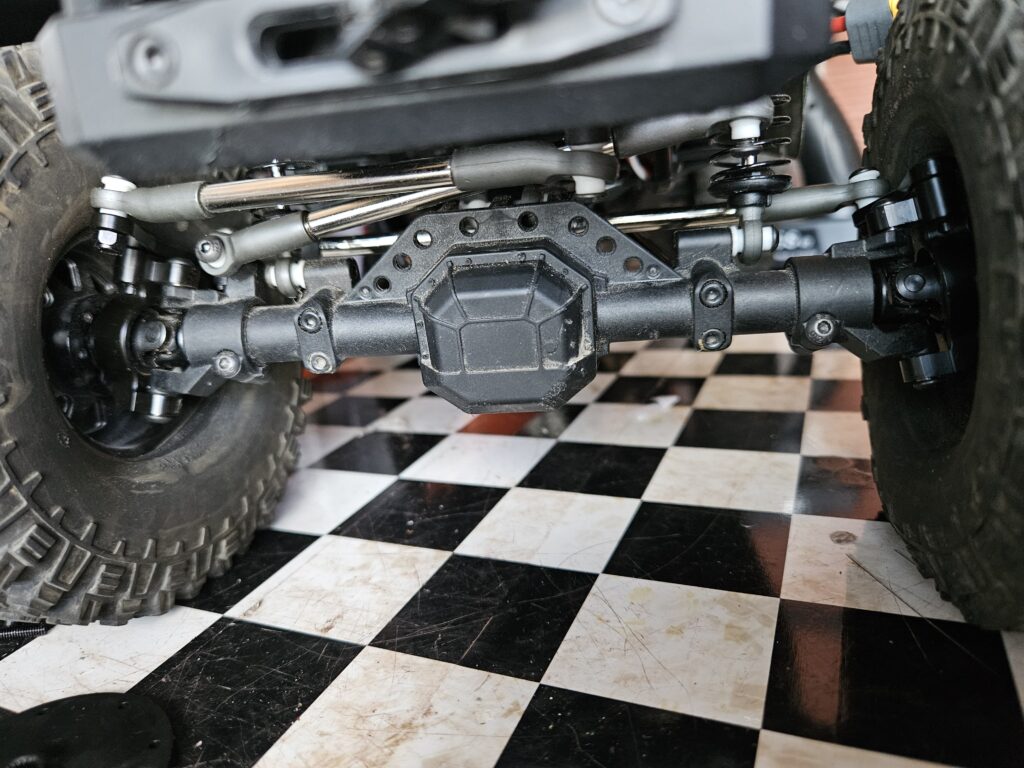
I must have missed my previous measurements (yellow), I expected to lower the CGH but not as much and especially a little more forward… except that after several measurements to be sure, the new CGH (red) is barely more forward but noticeabily lower.
